Welcome to the June 2023 issue of


ARCUS > Engineered for demanding sports and live major market news. Both touchscreen and physical control, plenty of IP layering, and paging, routing and logic control.


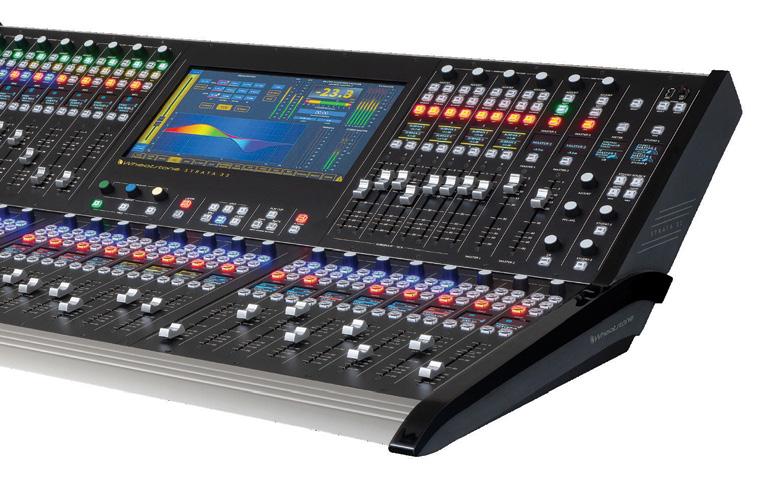
STRATA For remote work and local news. Works with Wheatstone’s LAYERS Server Engine or the Wheatstone BLADE-4 IP physical mix engine.

TEKTON > Compact, easy operation with physical and touch-screen flexibility. The TEKTON has all the TV features most studios need.

< LAYERS MIX SUITE

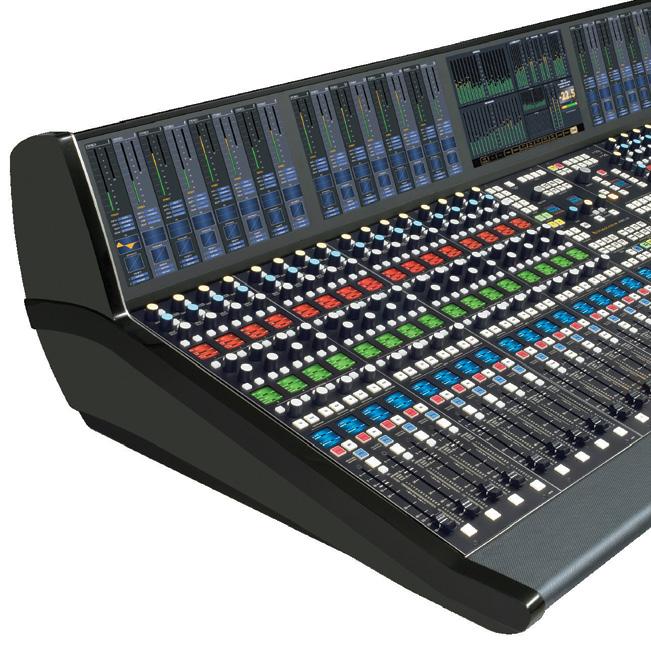
Build/control/extend your network virtually. Deploy multiple software mix engines and multitouch glass controllers from one or multiple servers to streamline your workflow.



BROADCAST AUDIO PERFECTIONISTS ® Good News Starts Here Wheatstone AES67/SMPTE 2110 -30 IP Audio Network Systems Learn more: wheatstone.com/tv-layers
AoIP WheatNet-IP Tablets Physical Control Surfaces Larger Format Touch Screens
>
LAYERS MIX SUITE SOFTWARE EQ/Dynamics Routing Logic LAYERS


w equipment guide Transmitters & RF Equipment www.tvtech.com | June 2023 CLOUD WORKFLOWS • AI: BEYOND THE HYPE • INTERCOMS’ EXPANDING ROLE
Is ATSC
How the next-generation broadcast standard is spreading beyond the U.S. 2023 BESTOFSHOW pp.20-23
Where in the World
3.0?
ARCUS > Engineered for demanding sports and live major market news. Both touchscreen and physical control, plenty of IP layering, and paging, routing and logic control.

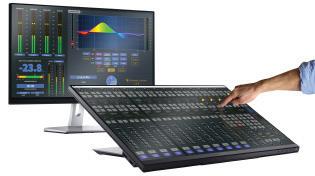

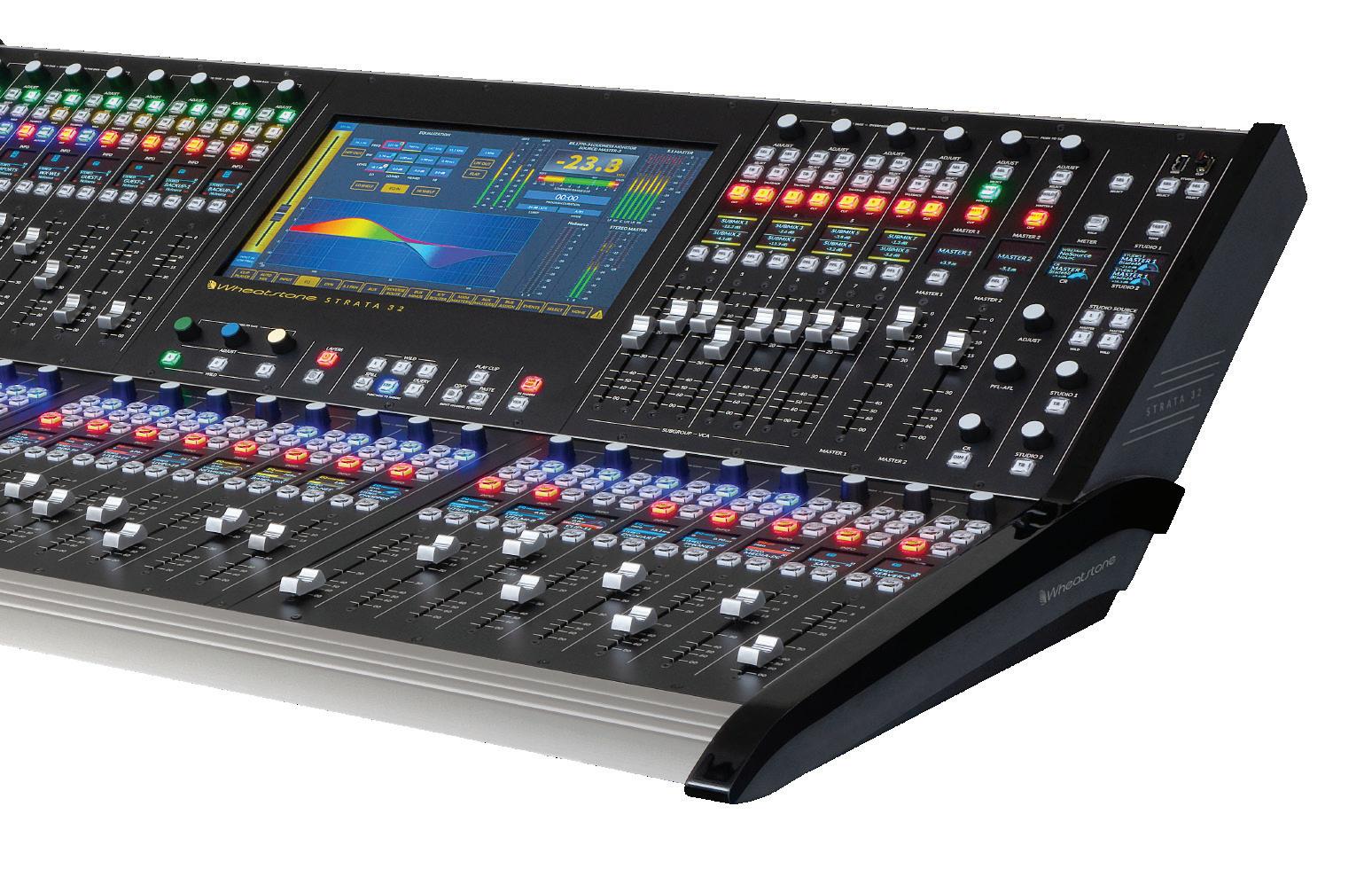
STRATA For remote work and local news. Works with Wheatstone’s LAYERS Server Engine or the Wheatstone BLADE-4 IP physical mix engine.


TEKTON > Compact, easy operation with physical and touch-screen flexibility. The TEKTON has all the TV features most studios need.
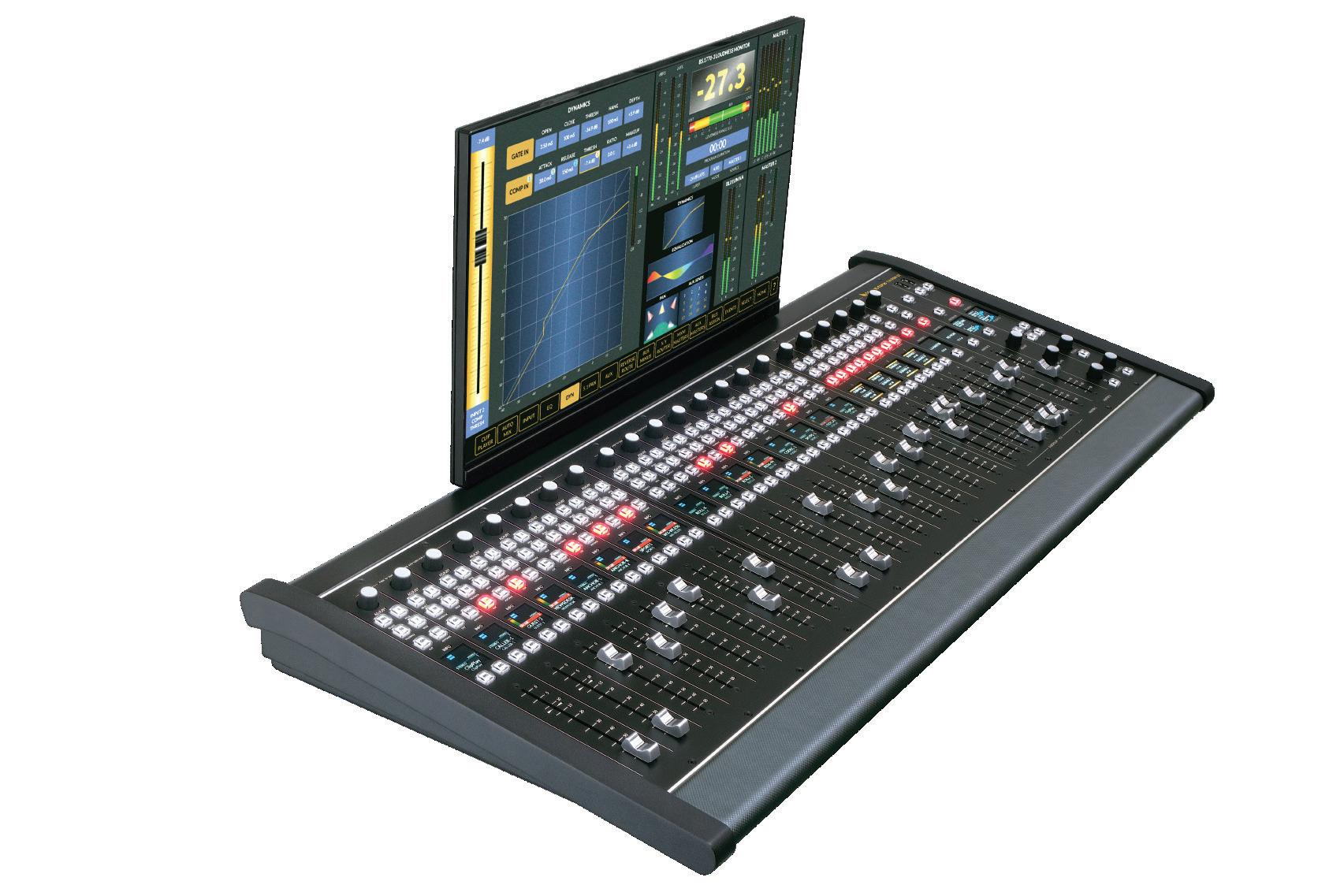
< LAYERS MIX SUITE
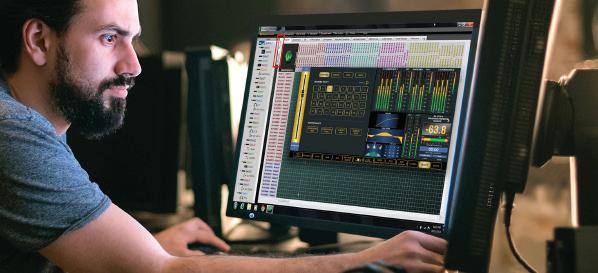

Build/control/extend your network virtually. Deploy multiple software mix engines and multitouch glass controllers from one or multiple servers to streamline your workflow.

BROADCAST AUDIO PERFECTIONISTS ® Good News Starts Here Wheatstone AES67/SMPTE 2110 -30 IP Audio Network Systems Learn more: wheatstone.com/tv-layers
AoIP WheatNet-IP Tablets Physical Control Surfaces Larger Format Touch Screens
>
LAYERS MIX SUITE SOFTWARE EQ/Dynamics Routing Logic LAYERS

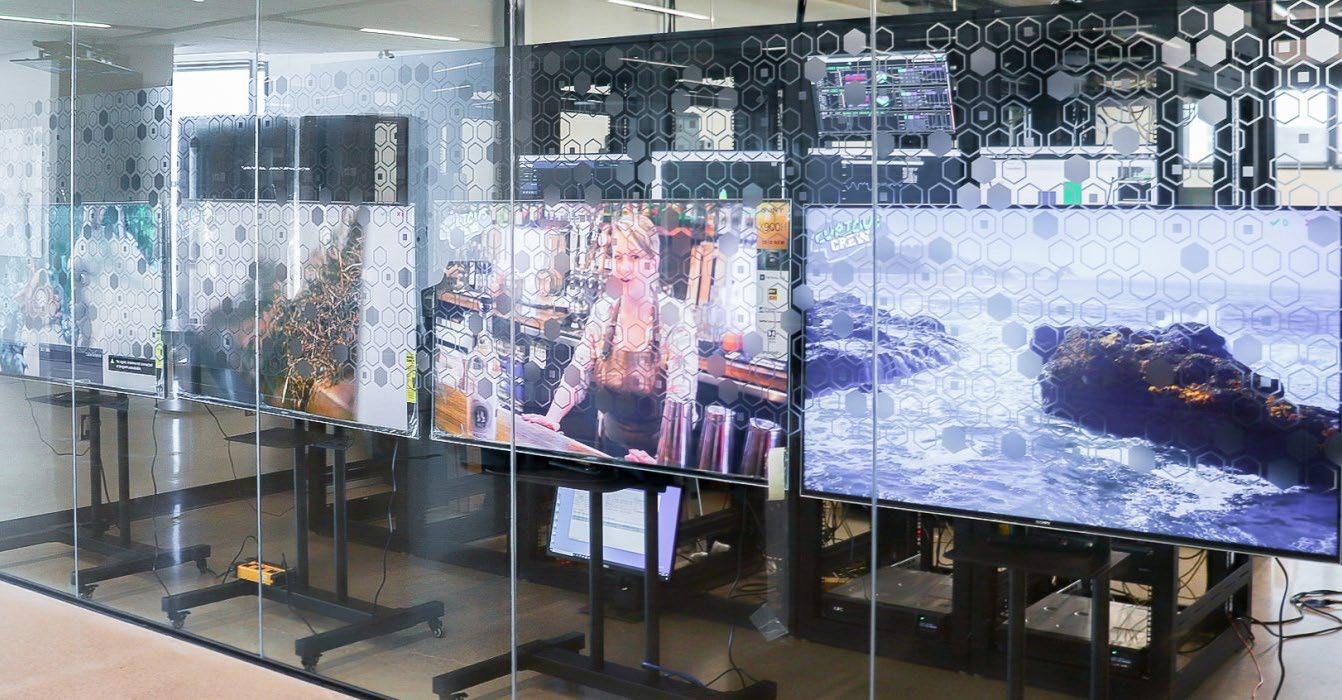
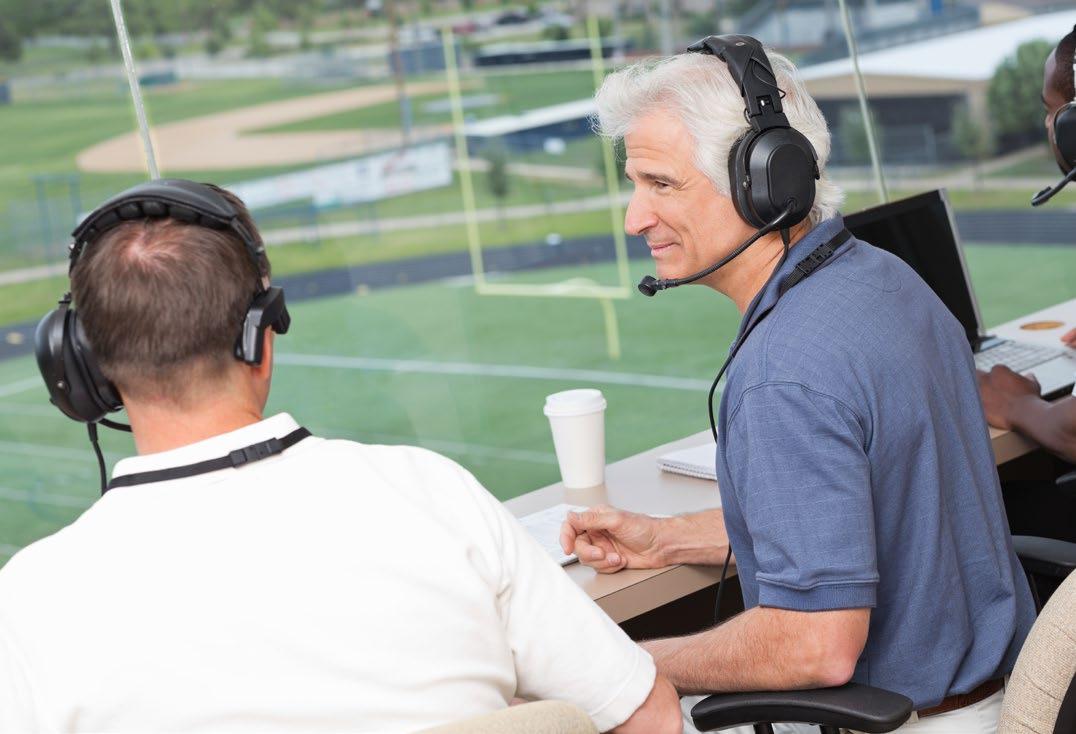

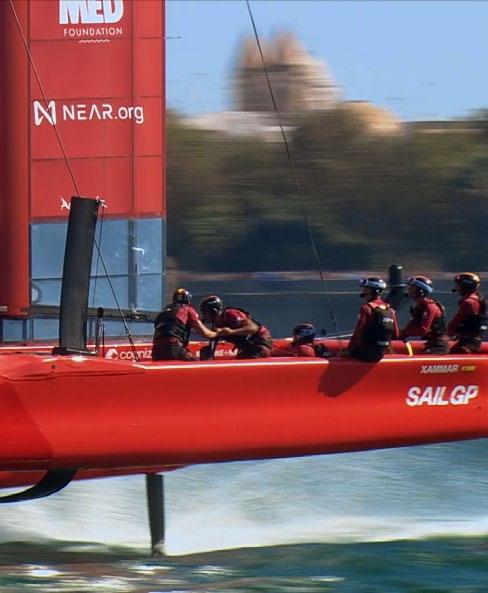

contents 8 What in the World Is ATSC 3.0 Doing Outside the U.S.? Other countries take their own approach By James Careless 14 Cloud Production: The Great Enabler of Doing More Though challenges remain, cloud-based productions are matching the natural ebb and flow of production cycles By Susan Ashworth 16 Remote Production Boosts Intercoms’ Role Comms systems adopt IP, cloud tech at NAB Show By Kevin Hilton 18 The State of Media Today Artificial intelligence is a double-edged sword for technology and creative excellence By Frank Beacham 20 2023 Best of Show Awards See the winners from this year’s NAB Show 24 AI-Generated Audio: The Government, Media and Doomsayers While AI/ML is not new in media production, new developments bring it to the forefront By Dennis Baxter 26 NAB Show Part 1: ATSC 3.0 Beyond TV Doug shares ATSC 3.0 innovations from the recent Las Vegas gathering By Doug Lung 08 June 2023 volumn 41, issue 06 6 in the news 28 eye on tech 24 14 18 twitter.com/tvtechnology | www.tvtech.com | June 2023 3 equipment guide user reports transmitters & rf equipment • Haivision • Dejero • GatesAir 30 30 06
Minow’s Legacy Extends Far Beyond ‘Vast Wasteland’
Since its inception in 1934, many individuals have chaired the workings of the FCC, with most names blurring with the passage of time. One does stand out, however, that of Newton N. Minow, largely due to an address he made at the 1961 NAB Show. His declaration then that TV was a “vast wasteland” reverberated across countless newspaper headlines, covers of popular magazines, and in news broadcasts and commentaries. Those words are now indelibly linked to Minow, whose family once threatened to inscribe his tombstone with the words “On to a Vaster Wasteland.”

However, there was more than criticism of television programming in that speech. Minow— who died last month at the age of 97—also championed other television-related topics and ideas, and would do much to push these forward. Topping the list were UHF broadcasting and international television.
The world of television was quite different in 1961: Three “classic” networks provided the majority of the programming for TV stations, with AT&T’s system of terrestrial microwave links and coaxial cables providing delivery. In mixed UHF/VHF TV markets, U stations were considered “second-class” citizens with small audiences, as few sets were equipped with UHF tuners and networks chose to affiliate with the Vs. Any programming from outside the country came by way of film or videotape.
Minow soon set the wheels in motion to change this status quo. One was to help elevate the status of UHF broadcasters. (In his quest for better children’s programming, it couldn’t have been lost on Minow that the majority of “educational” TV allocations were UHF channels.) Within a few months, the FCC assembled a package of proposals for bettering the lot of UHF broadcasters. These included a request for a Congressional mandating that all new TV sets be equipped with UHF and VHF tuners. Minow shepherded this legislation, and in a remarkably short time the “all-channel law” was signed, ending the manufacture of VHF-only sets.
In his NAB Show address, Minow offered that someday it would be possible for “a broadcast from a studio in New York (to) be viewed in India as well as in Indiana, (and) seen in the Congo as it is seen in Chicago.” This was a prophecy he helped bring to reality. Early in his FCC tenure, Minow learned that plans for launching what would be the world’s first telecommunications satellite had stalled out. He quickly jump-started this initiative, thus securing America’s position as a leader in this field. Slightly more than a month after the “all-channel bill” was passed, the “Communications Satellite Act of 1962” was signed into law, paving the way for instantly transporting broadcast and other signals to virtually any point on the globe.
So, when you tune your television set to Channel 24 this evening to watch a network newscast with the anchor reporting live from Kyiv, please recall that the 15th chair of the FCC, Newton Minow, had a big hand in making this possible. He should be remembered for much more than labeling television’s programming “a vast wasteland.”
James E. O’Neal
FOLLOW US www.tvtech.com twitter.com/tvtech
CONTENT
Content Director
Tom Butts, tom.butts@futurenet.com
Content Manager
Terry Scutt, terry.scutt@futurenet.com
Senior Content Producer
George Winslow, george.winslow@futurenet.com
Contributors: Gary Arlen, Susan Ashworth, James Careless, Kevin Hilton, John Maxwell Hobbs, Craig Johnston, Bob Kovacs and Mark R. Smith
Production Managers: Heather Tatrow, Nicole Schilling
Managing Design Director: Nicole Cobban
Senior Design Director: Cliff Newman
ADVERTISING SALES
Managing Vice President of Sales, B2B Tech Adam Goldstein, adam.goldstein@futurenet.com
SUBSCRIBER CUSTOMER SERVICE
To subscribe, change your address, or check on your current account status, go to www.tvtechnology.com and click on About Us, email futureplc@computerfulfillment.com, call 888-266-5828, or write P.O. Box 8692, Lowell, MA 01853.
LICENSING/REPRINTS/PERMISSIONS

TV Technology is available for licensing. Contact the Licensing team to discuss partnership opportunities. Head of Print Licensing Rachel Shaw licensing@futurenet.com
MANAGEMENT
SVP Wealth, B2B and Events Sarah Rees MD, B2B Tech & Entertainment Brands, Carmel King Head of Production US & UK Mark Constance Head of Design Rodney Dive
FUTURE US, INC. 130 West 42nd Street, 7th Floor, New York, NY 10036
All contents © 2023 Future US, Inc. or published under licence. All rights reserved. No part of this magazine may be used, stored, transmitted or reproduced in any way without the prior written permission of the publisher. Future Publishing Limited (company number 2008885) is registered in England and Wales. Registered office: Quay House, The Ambury, Bath BA1 1UA. All information contained in this publication is for information only and is, as far as we are aware, correct at the time of going to press. Future cannot accept any responsibility for errors or inaccuracies in such information. You are advised to contact manufacturers and retailers directly with regard to the price of products/services referred to in this publication. Apps and websites mentioned in this publication are not under our control. We are not responsible for their contents or any other changes or updates to them. This magazine is fully independent and not affiliated in any way with the companies mentioned herein.
If you submit material to us, you warrant that you own the material and/or have the necessary rights/permissions to supply the material and you automatically grant Future and its licensees a licence to publish your submission in whole or in part in any/all issues and/or editions of publications, in any format published worldwide and on associated websites, social media channels and associated products. Any material you submit is sent at your own risk and, although every care is taken, neither Future nor its employees, agents,subcontractors or licensees shall be liable for loss or damage. We assume all unsolicited material is for publication unless otherwise stated, and reserve the right to edit, amend, adapt all submissions.
Please Recycle. We are committed to only using magazine paper which is derived from responsibly managed, certified forestry and chlorine-free manufacture. The paper in this magazine was sourced and produced from sustainable managed forests, conforming to strict environmental and socioeconomic standards.
TV Technology (ISSN: 0887-1701) is published

June 2023 | www.tvtech.com | twitter.com/tvtechnology 4 guest editorial
monthly by Future US, Inc., 130 West 42nd Street, 7th Floor, New York, NY 10036-8002. Phone: 978-667-0352. Periodicals postage paid at New York, NY and additional mailing offices. POSTMASTER: Send address changes to TV Technology, P.O. Box 848, Lowell, MA 01853. Vol. 41 No. 5 | June 2023 Future plc is a public company quoted on the London Stock Exchange (symbol: FUTR) www.futureplc.com Chief Executive Zillah Byng-Thorne Non-Executive Chairman Richard Huntingford Chief Financial and Strategy Officer Penny Ladkin-Brand Tel +44 (0)1225 442 244 Future plc is a public company quoted on the London Stock Exchange (symbol: FUTR) www.futureplc.com Chief Executive Officer Jon Steinberg Non-Executive Chairman Richard Huntingford Chief Financial and Strategy Officer Penny Ladkin-Brand Tel +44 (0)1225 442 244
Former FCC Chair Newton Minow received the Presidential Medal of Freedom from President Barack Obama in 2016. He is the first and only member of the FCC to receive the honor.

Does ATSC Really Stand For ‘Accessible Television Systems Commitment?’
With more than a dozen important NextGen TV developments around the show floor and in the ATSC booth at the 2023 NAB Show, it was easy to miss what might be an emerging killer app for ATSC 3.0: accessibility.

No one could be faulted for missing it, however, because recognizing this killer app took a bit of sleuthing, the ability to piece things together and a pinch of imagination—a bit like solving a jigsaw puzzle.
The first piece: an OTA- and cable TV-delivered demo in the ATSC booth by NBCUniversal, Comcast, Sinclair, Pearl TV and Dolby. The group teamed up to show the viability of delivering a NextGen TV descriptive audio track and a second language—Spanish for the demo—with superior immersive sound.
The second piece: an info tidbit from ATSC president Madeleine Noland about ongoing work to add portrait-oriented video to the NextGen TV standard.
The third piece was a demonstration by the NextGen TV Korean Alliance in the West Hall where South Korea’s Electronics and Telecommunications Research Institute (ETRI), KBS,
June
Aircode, EQ4aLL and LowaSIS showed a system to insert an AI-driven sign-language avatar in a portrait-oriented picture-in-picture into NextGen TV to inform viewers with hearing impairments of emergency messages.
Consider these developments in the context of some facts about the United States. According to the Center for Disease Control and Prevention, 12 million people 40 years and older have vision impairments, and 1 million are blind. That’s today. How much higher will these figures get as Baby Boomers age?
According to NIH’s National Institute of Deafness, 15% of Americans 18 years and older —some 37.5 million people—report having some level of hearing impairment. A total of 8.5% of adults 55 to 64 experience a hearing impairment; 25% age 65 to 74; and half of those 75 and older have a disabling hearing loss, it reports.
Finally, an article from the U.S. Census Bureau published in December 2022 reveals about 20% of the U.S. population—some 67.8 million people—speak a language other than English at home—up nearly 300% from 1980. The five most frequently spoken languages at
In celebration of our 40th anniversary, TV Tech is offering a month-by-month look at some of the headline-making industry news of the past four decades.
1983: Although much of the activity at the Montreux International Symposium was focused on HDTV and the adoption of a global HDTV standard, RCA surprised attendees by unveiling their first CCD camera, the three-chip CCD-1. It featured a very impressive resolution, S/N, sensitivity and dynamic range.
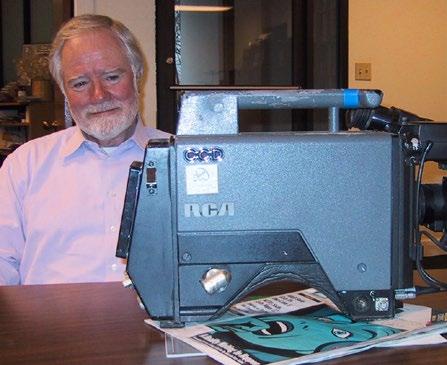
1993: The newly-formed Grand Alliance unveiled a proposed standard for U.S. high-definition television to the FCC’s Advisory Committee on Advanced Television Service. It advocated—along with a number of other tenets—the use of square pixels, progressive scanning,
home other than English are: Spanish or Spanish Creole, 41.7 million; Chinese, 3.5 million; Tagalog, 1.8 million; Vietnamese, 1.6 million; and Arabic, 1.3 million.
Taken together with NextGen TV developments, it’s not unreasonable to envision a future in which millions of new and currently underserved viewers are drawn to broadcast television, either to watch news, sports and entertainment with AI-driven, sign-language “speaking” avatars, or to listen to descriptive audio of on-screen action or second, third or beyond high-quality audio tracks in their native tongues–perhaps translated and spoken by AI algorithms in the cloud or on-prem at minimal expense.
What would attracting millions of new viewers to television do to rate cards and ad revenue? What would it do to demonstrate a deeper commitment to serving the public interest at license renewal?
Does ATSC stand for Accessible Television Systems Commitment? No. But for broadcasters, it most certainly could—and should. l
a 60-fps display, packetized transmission and MPEG-2 compression.
2003: The initiative to reallocate a portion of the 2 GHz BAS spectrum for cell phones, satellite phones and other uses is reported to have hit a serious snag due to financial and logistical issues, with matters further compounded by the FCC’s push for TV stations to convert to digital broadcasting.

2013: ESPN announced that it would drop its 3D service at the end of the year, citing limited consumer buy-in. Elsewhere, fallout continues over the BBC’s decision to scrap its five-year-old $150 million “Digital Media Initiative” for streamlining workflows and content archiving. Poor project management and a changing technology scene were blamed, with the BBC’s director general calling it the “(wasting of) a huge amount of license fee payers’ money,” and adding that he had “serious concerns about how we managed this project.”
James O’Neal
6 in the news June 2023 | www.tvtech.com | twitter.com/tvtechnology
OPINION
Phil Kurz
Credit: Wayne Caluger
Larry Thorpe, one of the developers of RCA’s first (and only) solid-state imager camera, the CCD-1.

What in the World Is ATSC 3.0 Doing Outside the U.S.?
Other countries take their own approach
By James Careless
The interest in ATSC 3.0 in the United States is so strong, that one might assume that it is being reflected in other parts of the world. However, the standard has only officially been adopted by Korea, Jamaica and the Republic of Trinidad-Tobago. But as other larger countries including Brazil, Canada and India illustrate, each nation has its own approach to next-generation broadcast TV. (Note: “NextGen TV” is the U.S. brand of ATSC 3.0.)
BRAZIL DESIGNING TRANSMISSION SYSTEM
Although Brazil has not selected ATSC 3.0 or any other predefined advanced terrestrial TV standard, a group of Brazilian broadcasters, manufacturers and academics called the Fórum do Sistema Brasileiro de TV Digital Terrestre (“SBTVD Forum”) has launched the “TV 3.0” project. This made-in-Brazil, custom-designed, next-
generation terrestrial digital TV system uses a hybrid broadcast/wireless broadband delivery approach, which the SBTVD Forum is promoting to the Brazilian federal government for adoption.

“The intention is to design a new state-ofthe-art terrestrial TV system that improves upon the current Brazilian DTV system, via a non-backward-compatible transition,” said Skip Pizzi, chair of ATSC’s Brazil Implementation Team. “TV 3.0 is being designed to provide greater OTA robustness and spectrum efficiency, higher audio and video qualities, greater flexibility for broadcasters and more choice for Brazil’s TV consumers, improved accessibility and emergency information features, along with expansion of the current Brazilian TV system’s interactive
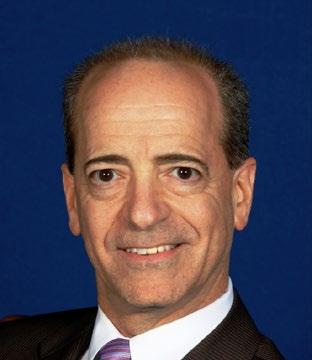
capabilities.”
This being said, the SBTVD Forum has already recommended using some core elements of ATSC 3.0 in its made-in-Brazil platform. They include ATSC 3.0’s ROUTE/ DASH Transport system, its MPEG-H Audio system, IMSC1 Captions system, and the ATSC 3.0 Advanced Emergency Alerting system, along with some elements of ATSC 3.0’s Video-HEVC system.
“The Forum continues to evaluate proposals for TV 3.0’s OTA Physical Layer and its Application Coding system, for which ATSC 3.0’s proposals remain in the running,” Pizzi added. “ATSC is assisting Brazil in the ongoing development of its TV 3.0 system. Like all proponents to the TV 3.0 process, ATSC has agreed that if any of its proposed technologies
8
June 2023 | www.tvtech.com | twitter.com/tvtechnology
The Natural Sciences and Engineering Research Council (NSERC) and Canada Foundation for Innovation (CFI) awarded a $3.34 million grant to Humber College to create Canada’s first Broadcast-Broadband Convergence B²C Lab in Toronto.
global outlook
Skip Pizzi, chair of ATSC’s Brazil Implementation Team
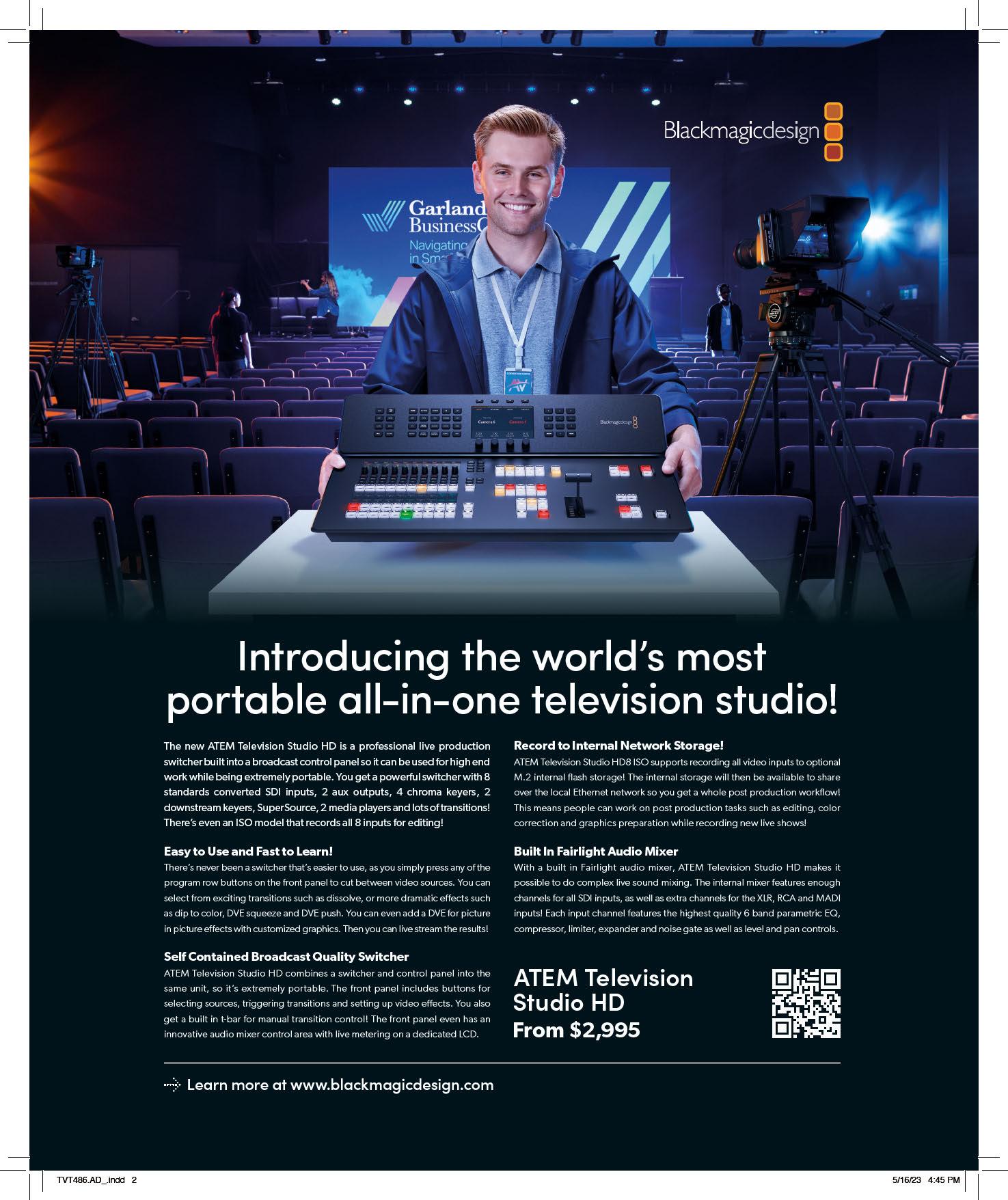
were selected by the SBTVD Forum, we would assist in the drafting of the TV 3.0 standard specifications, operational guidelines, and conformance documentation, which we are currently engaged with on the Audio, Video and Captions specifications.”
Pizzi said that an end-to-end demonstration of the complete TV 3.0 system is expected by August 2024 and expected to launch in 2025, “although spectrum allocations for the new service remain TBD,” he added.
The popularity of over-the-air Brazilian TV makes this a worthwhile investment for broadcasters. “It’s essentially the opposite of the U.S. situation, in that Brazil’s OTA TV usage accounts for about 85% of viewing, while pay TV’s penetration is only around 15%,” Pizzi explained. “As well, the overall market size is quite large, at around 70 million TV households and growing, with Brazil’s per-capita TV viewing second only to the U.S. in the Western Hemisphere, and fifthranked among all countries in the world.”
CANADA: INTEGRATING 3.0 AND 5G
To support research into ATSC 3.0 multi-sectoral applications in Canada, the Natural Sciences and Engineering Research Council (NSERC) and Canada Foundation for Innovation (CFI) has awarded a C$4.5 million grant (US$3.34 million) to Humber College to create Canada’s first Broadcast-Broadband Convergence B²C Lab in Toronto. It is headed up by Humber B²C Lab Director Orest Sushko.
“We are a 100% front-facing industry research lab,” said Sushko. “We are able to provide insights through ATSC 3.0 innovations in our lab that can inform and support new provisions in broadcast regulatory policy.”
To pursue its ATSC 3.0 research, the Humber B²C Lab has been equipped with an ATSC 3.0 IP-based broadcast ecosystem and a 5G core network, allowing its personnel to explore convergence of these two data delivery systems. The lab also has an RF anechoic chamber to support the development and testing of a wide range of wireless devices and prototypes.
As well, having been granted the first and only ATSC 3.0 experimental broadcasting license in Canada, the Humber B²C Lab has deployed a custom multiple transmitter/ antenna ATSC. 3.0 over-the-air test bed covering the Toronto area.
As for the role of Canadian broadcasters in this process? “They can help advance research using the television spectrum that could be supported by government
regulators,” Sushko replied. “This could bring forth new conversations about developing more efficient use of that spectrum through ATSC 3.0.”
“Our broadcasters are very supportive of the research work that we’re undertaking, as they continue to learn more about the standard,” he added. “They’re watching the U.S. rollout and still determining what sort of resources they’re prepared to put into ATSC 3.0.”
SOUTH KOREA: A TRUE ATSC 3.0 PIONEER
The Republic of Korea (aka South Korea) was the first to launch ATSC 3.0 in 2017 to deliver better video and audio quality to OTA viewers in its largest urban areas, using the 2018 Winter Games in PyeongChang to promote its 4K capabilities. Today, this country is extending ATSC 3.0 coverage to medium and small cities, according to Dr. Sung-Ik Park, the Republic of Korea’s Project Leader of ATSC 3.0 Physical Layer, for the Electronics and Telecommunications Research Institute (ETRI), a government-
funded research organization.
“Korea is the most advanced country in terms of SFN [single frequency network] design and optimization,” he said. “For example, KBS [Korea Broadcasting System], the largest broadcaster in Korea, constructed a national SFN with more than 20 transmitters and is installing more transmitters for better coverage and field strength. Furthermore, Korea is testing MIMO and Channel Bonding technologies for future applications such as 8K-UHD delivery and multiplex businesses.”
To date, South Korea’s interest in ATSC 3.0 has been for broadcasting 4K-UHD video and enhanced audio. However, “ATSC 3.0 is a toolbox that can do more than just TV,” said Dr. Park. “Korea primarily focuses on UHD broadcasting but has prepared several new services such as high-quality mobile for D2M (direct-to-mobile) and D2V (directto-vehicle), enhanced GPS for centimeterlevel accuracy, high-quality audio-only service, targeted advertisement, emergency alert and others.”
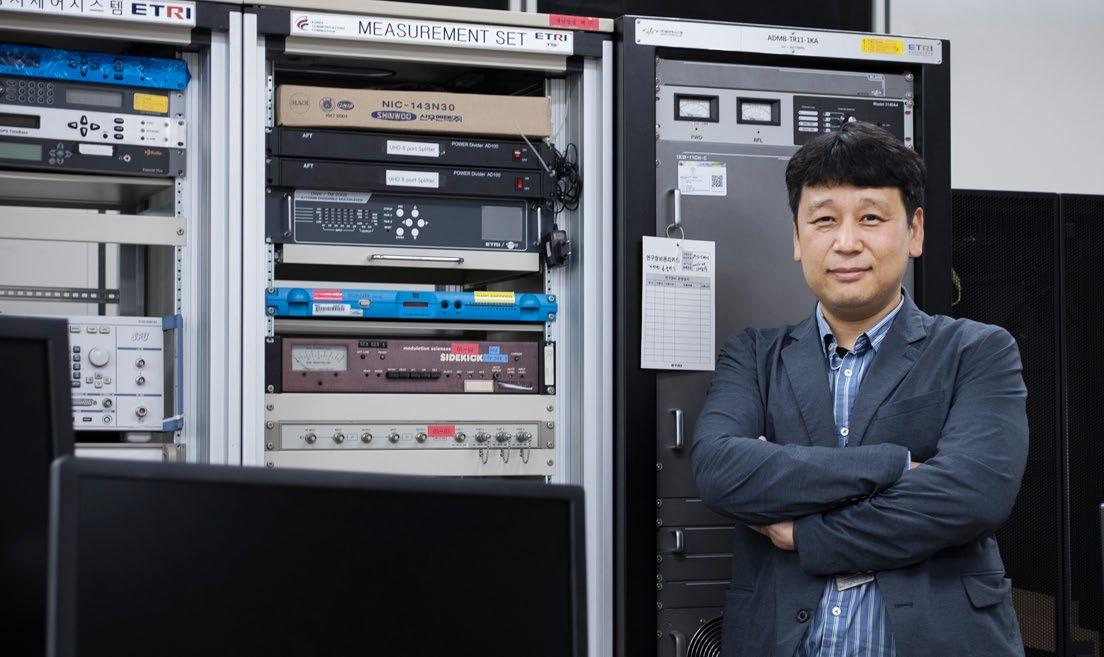 Dr. Sung-Ik Park, the Republic of Korea’s Project Leader of ATSC 3.0 Physical Layer, for the Electronics and Telecommunications Research Institute (ETRI), a government-funded research organization.
Dr. Sung-Ik Park, the Republic of Korea’s Project Leader of ATSC 3.0 Physical Layer, for the Electronics and Telecommunications Research Institute (ETRI), a government-funded research organization.
10 June 2023 | www.tvtech.com | twitter.com/tvtechnology global outlook
“Our broadcasters are very supportive of the research work that we’re undertaking, as they continue to learn more about the standard. They’re watching the U.S. rollout and still determining what sort of resources they’re prepared to put into ATSC 3.0.”
OREST SUSHKO, HUMBER B²C LAB

At present, the popularity of South Korean OTA TV is being undercut by Netflix and other streaming platforms. “However, OTA will be stronger than now due to the several new ATSC 3.0 services mentioned above,” Dr. Park said. “In particular, datacasting services like emergency alerts and enhanced GPS will be killer applications for terrestrial broadcasters.”
Meanwhile, government and industry support for ATSC 3.0 is strong in this country. “Korea commercially started UHD broadcasting in 2017 thanks to a great effort from broadcasters, industries, academics, and the government,” explained Dr. Park. “Due to this effort, major TV manufacturers support the ATSC 3.0 function in their models. Korean broadcasters plan to install ATSC 3.0 in all major cities by 2023 and cover the whole territories of South Korea, including medium/ small cities, by 2027.”
INDIA FOCUSES ON D2M
The world’s most populous country has also been considering ATSC 3.0 as its nextgeneration terrestrial television standard. In 2021, the ATSC signed an agreement with the Telecommunications Standards Development Society, India (TSDSI)—the government agency responsible for developing telecommunications standards in the country—to transpose ATSC 3.0 as a possible next generation broadcast standard. That work is now complete.
Mark Aitken, senior vice president of advanced technology with Sinclair Broadcast Group—which has been working with
broadcasters in that country to build an SFN for ATSC 3.0 trials in Bangalore—says that rather than adopt the standard as a whole for TV, the country is considering certain aspects of ATSC 3.0—in particular its mobility elements—in a “direct-to-mobile” (D2M) strategy.
“The ministry in broadcasting [MIB] has explicitly asked for proposals to build out direct-to-mobile infrastructure,” he said. “So there’s activity underway with both private and government parties working together to figure out building out marketplaces with direct-to-mobile [services].”
In a country where only 2% of the population watches television over-the-air, using broadcast to transmit to mobile devices could go a long way towards closing the digital gap, Aitken said. He added that more than 800
ATSC Seeks to Converge Global DTT Standards
With worldwide broadcast standards now combining traditional over-the-air terrestrial television with Internet Protocol, the ATSC is working on ensuring ATSC 3.0 and other digital terrestrial television (DTT) standards are part of a global wireless ecosystem that includes cellular standards such as LTE/5G as well as Bluetooth and Wi-Fi.
In February, the U.S. based standards committee released a white paper (available at atsc.org) on its campaign to remind decisionmakers of the value, ubiquity and robustness of advanced broadcast standards such as 3.0 and DVB, the dominant broadcast standard in Europe.
“The paper is a very public statement from the ATSC that basically expresses a strong desire to work closely with other digital terrestrial television standards development organizations in an effort to look at where technology can be converged and work on developing a unified voice on the world stage for broadcasting,”
million people in India don’t have access to high-speed broadband, and yet the country is the largest per capita consumer of digital video services on mobile devices in the world, “by a fairly large margin.”

Aitken says the Indian Telecommunication Engineering Centre (TEC), the government agency responsible for approving telecommunications standards in India, is expected to make a decision on whether to make 3.0 the D2M standard by the end of the year.
If TEC gives its approval, it’s very likely that the government could mandate support for 3.0 chipsets in mobile devices sold in India, giving ATSC 3.0 an enormous boost (and argument for) adding support for 3.0-enabled mobile devices in other parts of the world. l
said Madeleine Noland, president of ATSC.
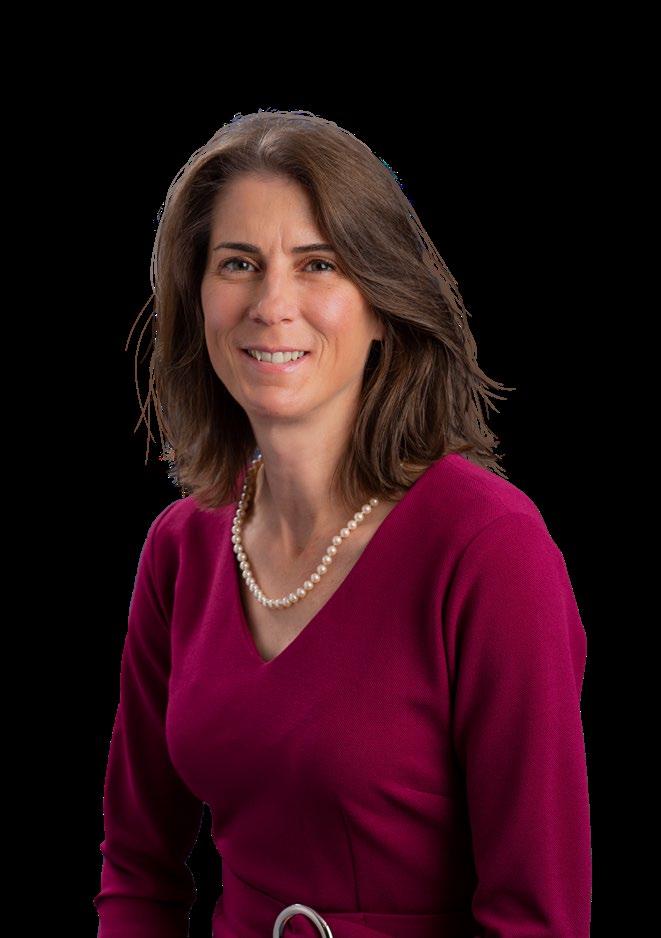
The ATSC plans to discuss its proposals with an eye towards the ITU World Radiocommunication Conference 2023 in November.
The work towards converging worldwide broadcast standards has been ongoing for more than a decade, according to the ATSC.
“The effort to forge a next-generation broadcast standard that encompasses all the major standards development organizations (SDOs) dates back over 10 years,” starting with the Future of Broadcast Television (FOBTV) Summit in November 2011 in Shanghai, the association said. “The initial goal of FOBTV to foster work on a best-of-the-best next-generation television system has not been realized to date, but since its formation the group has served as a forum for communication and exploration of new technologies and ongoing efforts underway within the various SDOs.”
Tom Butts
12 June 2023 | www.tvtech.com | twitter.com/tvtechnology global outlook
Credit: Getty Images
India is the largest per capita consumer of digital video services on mobile devices in the world “by a fairly large margin.”

cloud workflows
Cloud Production: The Great Enabler of Doing More
Though challenges remain, cloud-based productions are matching the natural ebb and flow of production cycles
up and down and switch services on and off is easy to do when all the components are virtualized in the cloud, Scurrell said. “You basically use them—and pay for them—when you need them.”
The limit on a business’s production capacity is typically determined by the resources or equipment available. However, the use of cloud-based technology seeks to eliminate this restriction and allows resources to expand as demand for capacity increases, according to Harry Sampson, product manager of Cloud Production Solutions for Ross.
“By facilitating businesses to scale up or down based directly on their production requirements helps enable greater utilization while also reducing large upfront costs associated with building additional production facilities,” he said.
TRICKLE DOWN
The efficiencies don’t stop there since cloud-based production also trickles down to staff and equipment efficiencies too.
By Susan Ashworth
It’s not the end-all, be-all answer for every production-based scenario. But according to some, it’s getting there.
Its capabilities to connect, streamline, produce and deliver have brought cloud-based production into the mainstream, with more cloud-based components being designed for the production ecosystem and more broadcasters using public cloud providers for high-value events and channels.
The reasons are plentiful, with two key issues taking the lead: the ability to save on infrastructure costs and the desire to accelerate change in an ecosystem that seems ready-made for innovation.
“Cloud technology enables broadcasters to spin up multiple environments/systems, tinker with new production workflows and then have a template for reuse or tear it all down—wash, rinse, repeat, as needed,” said Dave Norman, principal sales engineer for Enterprise Products for Telestream. “Leveraging [the] cloud drives this pace of innovation by orders of magnitude.”
ACCELERATED WORKFLOWS
When comparing cloud-based with on-prem workflows, the velocity at which teams can experiment increases massively, Norman said, and the cost of innovating a new workflow with a “never done before” approach is minimal. Cloud production is rapidly becoming the great enabler of “doing more.”
Cloud production should be seen as a step change in the speed of production, “whether that is across different shooting locations or just the speed of getting content edited, reviewed and to the consumer very quickly on social media platforms,” said Paul Scurrell, senior vice president of product for Atomos. “Productions just become more ‘real-time.’”
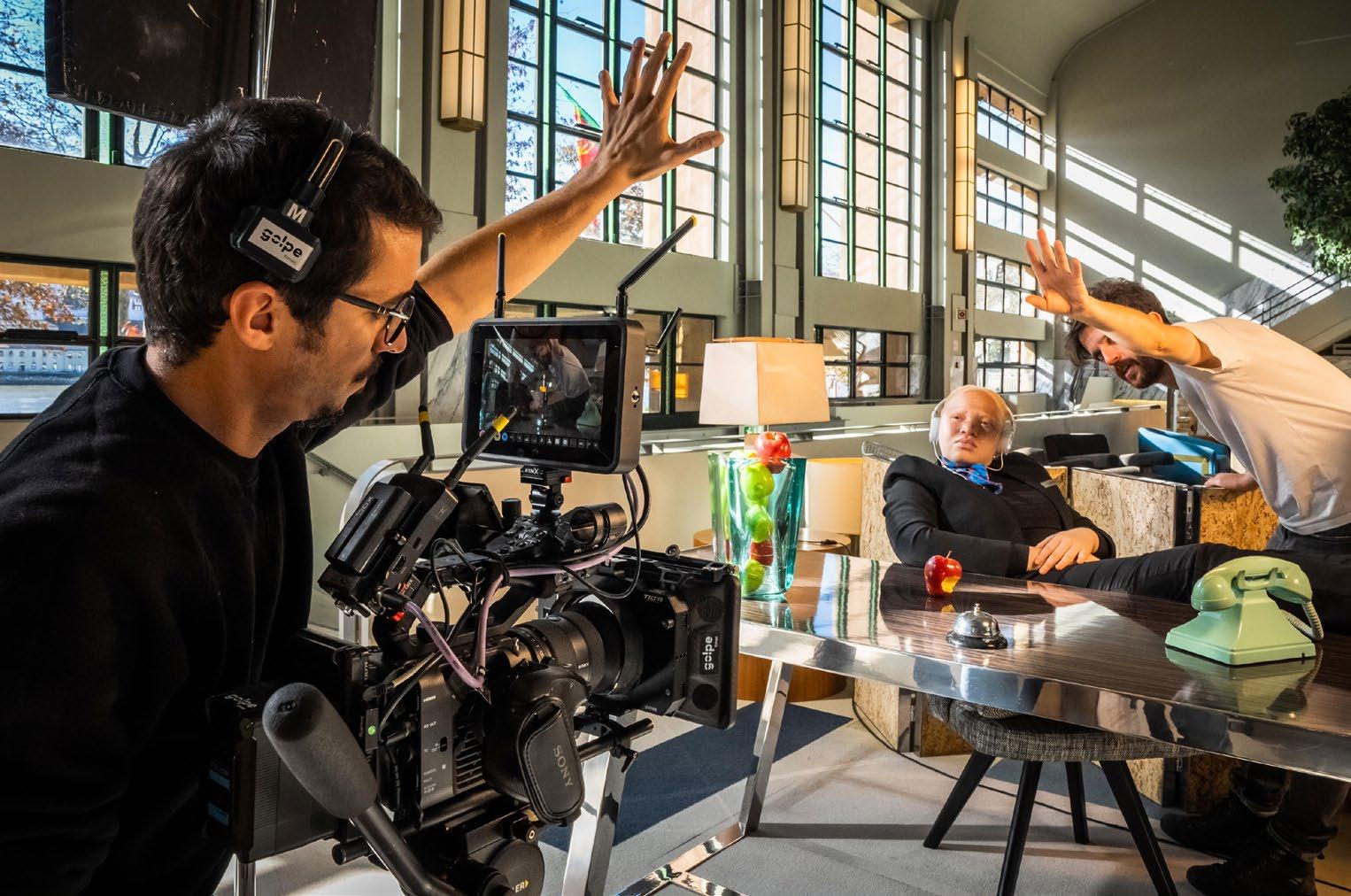
Another reason that cloud-based productions have taken off? Cost. From the start, a product cost is minimized because the focus of a production is on infrastructure that is managed and supported by a third party. As a result, broadcasters and content creators are able to spend fewer resources on infrastructure and can instead focus on production technologies at the event itself.
Cloud-based production is also being touted for its flexibility. After all, the ability to scale
“Engineers, production staff and editors can support and work on a cloud-based production from anywhere, therefore expanding the scope of a production and access to talent, Telestream’s Norman said. “Cloud-based production also allows a previously unseen level of flexibility—as needs increase and decrease throughout the lifespan of a production, additional resources can easily be allocated or scaled-down without the historic hindrance of capital expenditure, coordination and facility management.”
This is indicative of where the industry is headed. “Deploying and managing a traditional on-premise production facility requires dedicated resources such as an IT department, commissioning and support teams as well as physical equipment rooms with air conditioning,” Sampson said. “By leveraging cloud-compute, businesses can benefit from increased efficiency by simplifying operations, automating tasks and minimizing manual intervention.”
When deploying in a cloud environment, significant time and cost savings can be made, with no need for shipping, installation or cabling, he added. “As a result, turning on and off a production environment can now realistically be a quick and simple task.”
“Remote production and the ability to create content from anywhere is now a permanent fixture,” he added. “Cloud-based technology allows businesses to deploy live production resources globally across multiple regions at the click of button and give operators immediate access from anywhere with an
14
June 2023 | www.tvtech.com | twitter.com/tvtechnology Gonçalo Delgado/Global Imagens
Over the next few years, cloud production use cases are expected to trend upwards, with broadcasters continuing to experiment with more events and channels.
internet connection.”





















The tools that facilitate those features are also maturing in capability.







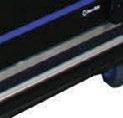




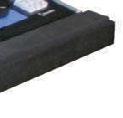





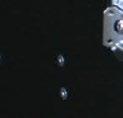






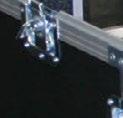



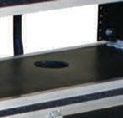
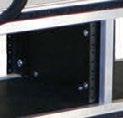







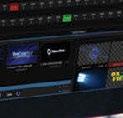

Technology such as the Ross Production Cloud is designed to enable gains in efficiency, flexibility and scalability, which should result in improved costs while also simultaneously ensuring that customers have access to familiar user interfaces.


There are also technologies that can now quickly and costefficiently increase record channel capacity with cloud-deployed software. Telestream’s Lightspeed Live Capture software, for example, can run unshackled from physical hardware, meaning a user can increase their record footprint by sending contribution IP streams to a public cloud provider for recording sources that were previously not being recorded due to a lack of physical space at a venue. “As soon as the event is complete, you can simply sunset the cloud environment,” Norman said.
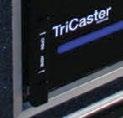



For some time, content creators have successfully turned to the cloud to send files of significant size during a production. Media
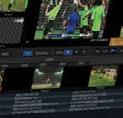
Shuttle from Signiant, for example, allows a producer to leverage cloud storage and other cloud services in this way.









ADAPTING A NEW MINDSET
As with any industry wide change, challenges remain—including concerns over security, availability, speed and access. It’s also important to note that cloud-based production requires a different skill set than those held by typical engineering teams who otherwise support on-premise technology.
“Production teams need to also adapt their mindset to embrace cloud-based productions,” Norman said. “There is some lack of tangibility, for instance, that exists in a fully cloud-based production that does not exist on-premise. Moreover, object storage is not file- or block-level storage, and there are some rough edges surrounding immediate access to objects that live in object storage.”
Other concerns remain. “When working on A+ grade productions with HDR/SDR heterogenous color profiles, as an example, cloud production becomes challenging today,
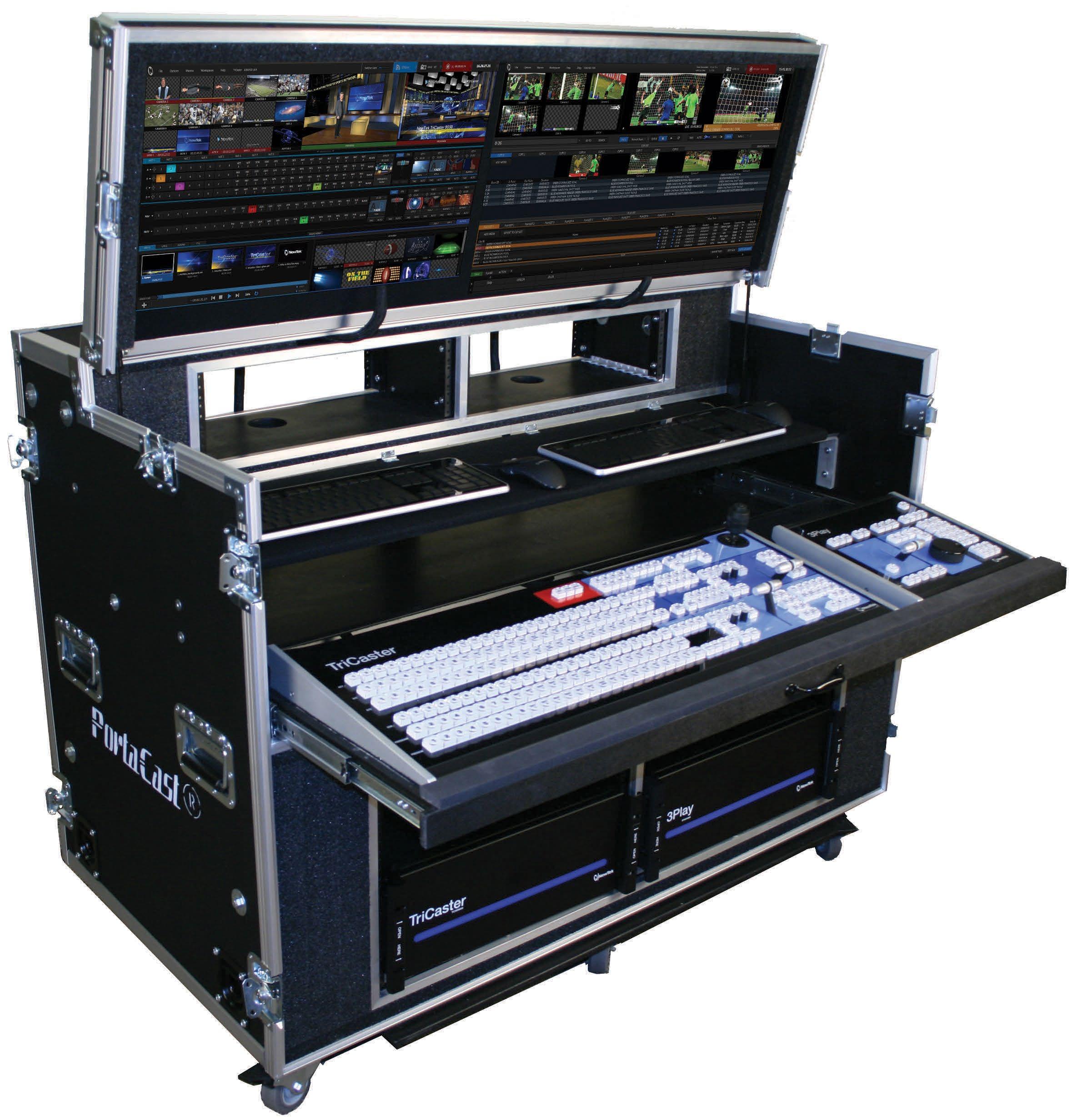




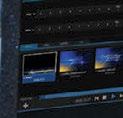


cloud workflows
and on-prem gear/tools play a critical role,” he said.





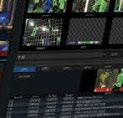
Other roadblocks include concerns over network latency, bandwidth, interoperability, audio hiccups and transparent pricing. “It is important to acknowledge that production in the cloud may not be the ideal solution for all applications, and traditional hardware will undoubtedly continue to play a key role — let’s face it, some things have to stay on the ground,” said Ross’ Sampson. Yet despite these challenges, there are meaningful gains to be realized by leveraging cloud technology in live video production.


“Historically, cloud technology has always evolved at pace and I see our industry moving in the same direction; many of the current hurdles won’t be around for long,” he said.
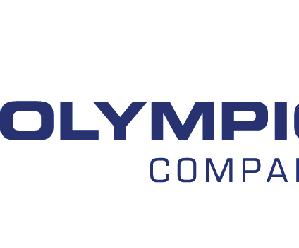
What continues to draw interest, despite lingering challenges, is the flexibility and low cost of entry, said John Wastcoat, senior vice president of Strategic Alliances and Marketing for Zixi. “Broadcasters are starting to adopt these models because it allows them the flexibility to produce more content and events, something that would not fit legacy production budgets. l
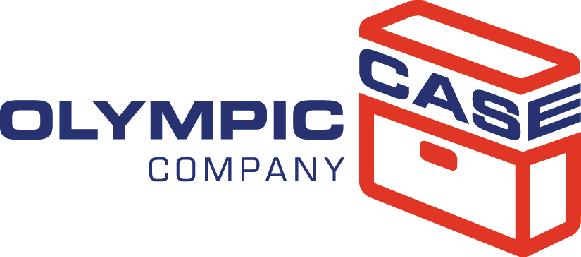 Dave Norman
Dave Norman
media comms
Remote Production Boosts Intercoms’ Role
Comms systems adopt IP, cloud tech at NAB Show
By Kevin Hilton
Communications systems have always been a necessity in broadcasting but, often, they were something that was almost taken for granted. But this year’s NAB Show gave a major platform to new intercom technologies and products.
Many of the big technological trends and fashions in broadcasting do not always cover all the technical aspects of acquisition and production. The spotlight at most NAB Shows over the last decade has been firmly on 4K, HDR and location to post-production workflows. With the possible exception of the last of those, that focus has excluded intercom but this always important, sometimes overlooked area is now fully on trend thanks to the high profile of the cloud, virtualization and remote operations at the major broadcast technology exhibitions of the last few years.
That was certainly the case at this year’s Vegas gathering, where Remote Integration (REMI) based on IP—and increasingly involving the cloud and virtualized systems—was addressed by the main intercom manufacturers.
BRIDGING OLD WITH THE NEW
“People continue to look for new ways to communicate,” said Kris Koch, business development director for Broadcast Network and Media Production at Clear-Com. “In particular, REMI workflows were a common topic at NAB Show. Our customers require us to be flexible in supporting their workflow, whatever that may be. Often we need to bridge older technologies with new IP based workflows, so while AoIP [audio over IP] has become something of a standard in new designs, most customers need to transition into IP workflows.”
Clear-Com’s Arcadia Central Station received particular attention this year— the IP-based communications platform is scalable and can integrate components from the company’s HelixNet, FreeSpeak and Encore ranges, as well as third-party Dante
AoIP devices, to provide communications for fly-away systems and OB trucks. Also on show were new features for the Eclipse HX digital matrix, including Dynam-EC real time production software and V-Series Iris IP-based user panels.
Telos Alliance made the brave— or foolhardy—decision to give live demonstrations of its Infinity Virtual Intercom Platform (VIP), linked together with other AoIP products from the company’s portfolio, plus telephony devices, on what Martin Dyster, vice president of business development, described as “one big LAN.” He acknowledges that it was a “bit of a leap of faith” to stage such a demo at a trade show but that the company wanted to illustrate how a hardware system could be virtualized in software and deployed on a computer or mobile phone with built-in audio, including a USB microphone and loudspeaker.
Telos VIP is now featured as part of other companies’ cloud infrastructures, including Grass Valley AMPP (Agile Media Processing Platform), Vizrt’s Viz Now and the Panasonic KAIROS IT/IP system.
“It has found favor from some big hitters that have built end-to-end virtual platforms using a SaaS [software as a service] model,” explains Dyster. “VIP doesn’t need a lot

of bandwith, it can work as a four-wire intercom for both on-prem and cloud with about 32 Kbps in each direction.” He adds that the audio quality produced has now led to customers wanting to use the system for both contribution links and voice-overs.
MATRIX ADVANCES
Intracom Systems’ VCOM virtual matrix is another software-based communications platform aimed at both on-premises and in-cloud implementation. During the NAB Show, the company highlighted v7 of the system, which included new features for selecting talk and listen keys, which can now also be activated using Elgato’s Stream Deck control interface, and managing user access using Single Sign On (SSO).
Intracom chief executive Stephen Brand observes that in the current “crowded intercom field,” broadcast customers are looking for features, functions and overall technologies that will “save them money, simplify workflows and keep them ahead of the curve in a highly competitive environment where pristine communications are critical.”
AEQ has taken a matrix-less approach with its Xpeak system. This cloud-based intercom is particularly aimed at live and remote production applications, with Sales Director Gustavo Robles adding that REMI is now a “major trend in the market.” New from AEQ this year was the TP9116 rack-mounted intercom panel, featuring 16 four-way lever keys, with two functions on each lever, and IP connectivity over either Dante or AES67. Robles said a desktop version could be available by IBC.
Riedel Communications launched its Audio Monitoring App (AMA) for the 1200 SmartPanels range at the show. Product Manager Kristina Uhlitz comments that this is capable of running “several apps simultaneously” and attracted interest from many of the visitors to the company’s booth. Also introduced were the Dante UIC card for the Artist system and new firmware for Bolero and its integrated charging station. “It provides visual data of registration and charging status and lets you upgrade all devices in the charger at once,” she added.
RTS introduced the DSPK-4 digital speaker station, part of the RTS Digital Partyline intercom range. Offering hybrid functionality in desktop, flush-mount and wall-mounted versions, it can operate in party line mode with the OMS (OMNEO Main Station) or as a portable key panel in conjunction with a RTS matrix, either ODIN or ADAM.
16
June 2023 | www.tvtech.com | twitter.com/tvtechnology
Martin Dyster, vice president of business development for Telos Alliance
COMPETITOR COMPATIBILITY
Many intercom manufacturers now offer compatibility with competitors’ systems.
Studio Technologies’ new Model 545DC is compatible with Clear-Com party line products, while the Model 545DR, launched alongside it, offers a single two-channel interface for the RTS TW two-channel analog intercom circuit series. Both can connect to Dante-equipped matrix intercoms, digital audio processors and mixing consoles and can work with Studio Technologies’ Dante-enabled belt packs, intercom stations and audio engines. Also new was the Model 342 intercom station, which can be used in multiple modes with a Dante audio matrix or as a point-topoint system involving two units.
Pliant Technologies continued to fly the flag for wireless-based intercom and debuted a new IP-rated radio transceiver for its CrewCom range. Available in both 900 MHz and 2.4 GHz versions, these are aimed at live broadcast and events where outdoor placement of transceivers is necessary.
Also on the booth was the new CCU08 CrewCom control unit, which allows operators to use up to eight four-wire ports
and provides the same features as the existing CCU-22 and CCU-44. Gary Rosen, vice president of global sales said there was still interest in wireless communications and while the cloud and AoIP have found favor for remote production, when it came
to on-site installations “a dedicated and reliable intercom system remains key for most users.”
Whatever the connectivity medium, intercom certainly showed significant advances at the NAB Show. l


media comms
Riedel Product Manager Kristina Uhlitz at the 2023 NAB Show with Reidel’s new AMA SmartPanel app.
The State of Media Today
Coming out of the 2023 NAB Show, I was struck by several developments—indicating both the best and worst of times in media.
Media technology today has never been better. Now with hybrid production both locally and in the cloud, sophisticated live television can be produced from anywhere in the world at a lower cost than ever before. Virtual sets are transforming physical production, making any kind of video more affordable.
Great cameras and audio production gear have hit rock bottom prices. Today, distribution is virtually free, and anyone can watch anything at any time. We are living in a golden age of technology.
Creativity is also soaring. Some scripted television dramas are the best they have ever been in the history of the medium. Many audio podcasts—for example, The New York Times “The Daily,” are better than what used to be called radio.
Sure, there are still a lot of bad shows being made (as always), but the good ones are better than ever before.
Yet, out of this wonderland of media technological and creative excellence comes a double-edge sword—it’s called artificial intelligence or “AI.” As with all technology, we humans make it, use it, influence it and twist it to our wishes.
WHAT’S THE BUZZ?
AI was a frequently used buzzword at the NAB Show. Few people who talked about it, actually defined it. Most spoke of specific features that would aid their software in doing a better job. It was always cited as a benefit and in many cases it is.
For example, AI can aid video editing by speeding up the process and making it less expensive. It can do wonders for processing sound, text, still images… you name it.
AI can also imitate human voices, recreate

the images of actors, write songs, write and edit copy, transcribe audio recordings and a lot of the heavy lifting in routine office work. It seems almost each day, we read about AI getting harder and harder to differentiate from what is genuine.
AI, however, is based on machine learning, which means it gets raw information from human beings. It does not think for itself. With it comes human bias, mistakes and sometimes outright deception. AI is not magic, and no better than humans.
And it changes almost by the day. Recently, PetaPixel broke a story about an
artist—Boris Eldagsen—refusing a prize from Sony’s World Photography awards photo contest because his winning image was totally AI-generated—meaning it was totally fake.
Elgadsen didn’t want the award; he wanted to show how good AI fakery has become. He succeeded and proved that many people cannot spot a fake, including the judges for the Sony global photography contest. That is scary!

That example is just the beginning. AI is being used almost daily to create a range of fake images—from public figures convincingly eating concrete to visually increasing the crowd size at music concerts.
Just hours after President Biden announced his re-election campaign for 2024, Biden’s primary opposition, the Republican National Committee, launched an attack ad built entirely with AI imagery.
The ad’s description on YouTube explains that the video is an “AI-generated look into the country’s possible future if Joe Biden is re-elected in 2024.” The video opens with a fake victory celebration showing President Biden and Vice President Kamala Harris. The giveaway is they both have far too many teeth (AI technology today has difficulties with teeth!)
Just before Donald Trump’s arraignment in New York City, AI-generated images made the rounds. The photos were obviously fake, but many people couldn’t see the difference.
An AI creation app—Midjourney—has banned the name “president Xi” from its AI platform in an attempt to block users from creating alternative versions of Chinese President Xi Jinping. He is the only world leader blocked, so far.
It will be interesting to see how AI technology shapes future elections worldwide, including the 2024 U.S. presidential election.
The U.S. Chamber of Commerce has recommended regulating AI, but, interestingly, for economic reasons, rather than the misinformation it can promote. For now, AI technology remains unconstrained, and most of the limits placed upon it are by
18 June 2023 | www.tvtech.com | twitter.com/tvtechnology media tech Boris
Eldagsen
Photographer Boris Eldagsen refused a prize from Sony’s World Photography awards photo contest because his winning image was totally AI-generated.
Frank Beacham EXPERTISE
Artificial intelligence is a double-edged sword for technology and creative excellence
It seems almost each day, we read about AI getting harder and harder to differentiate from what is genuine.
the AI companies themselves.


REALITY AND IMAGINATION
It is obvious that AI redraws the lines between reality and imagination.
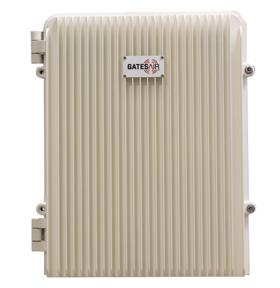






Genuine digital photographs risk becoming obsolete, further complicated by AI flooding the internet with fake visual documents. In the future, there is a question of whether most of us will be able to separate legitimate imagery from created history.

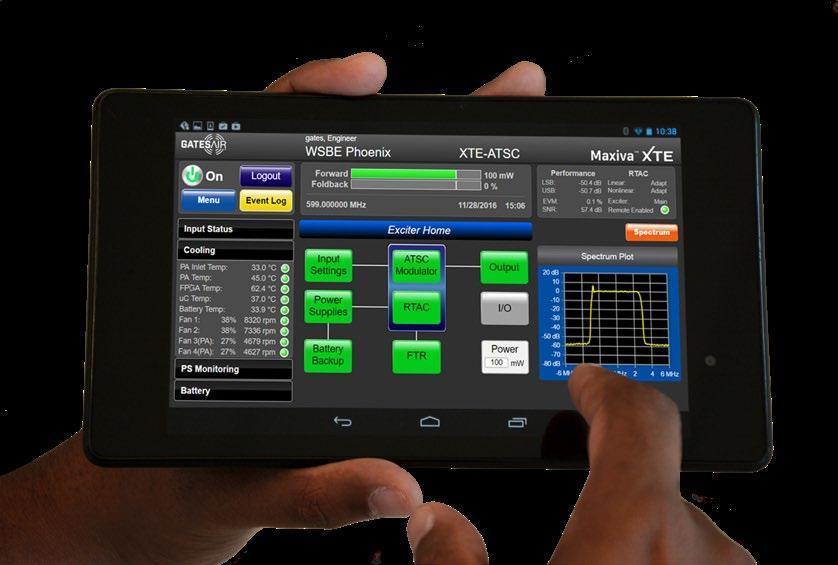
So far, nothing is being done to protect society from misinformation from AI. The White House has a proposal on the table, but no laws on the books. Apart from last month’s hearing with the CEO of ChatGPT, Congress has done little else. The interaction of free speech and expression with AI technologies in the future is still a very open question.
One certainty: No corporate policy or legislation surrounding AI has yet been able to keep up with the pace at which AI technology is developing. And there appears to be nothing that can slow down its rapid development.


When you hear the term AI being bandied about, think about what it really means. Yes, there are many ways it can ease laborious tasks, but it can also easily create a massive dislocation of jobs and disrupt society in a thousand unpredictable ways.
With all the marvels of media technology around us, AI is something we should not blindly embrace. It can be dangerous stuff. l




media tech
Frank Beacham is a New York City-based writer and media producer.
Celebrating its 10th year, the 2023 Best of Show award recipients at this year’s NAB Show demonstrated innovation and excellence worthy of our recognition. Congratulations to all the winners!

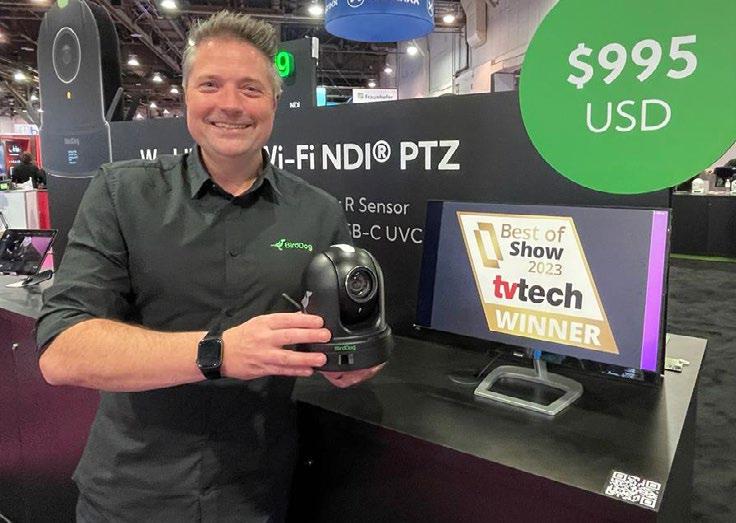


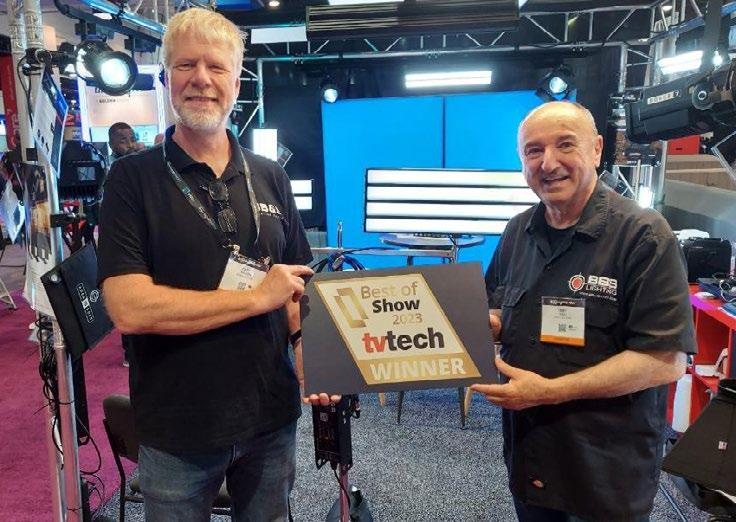
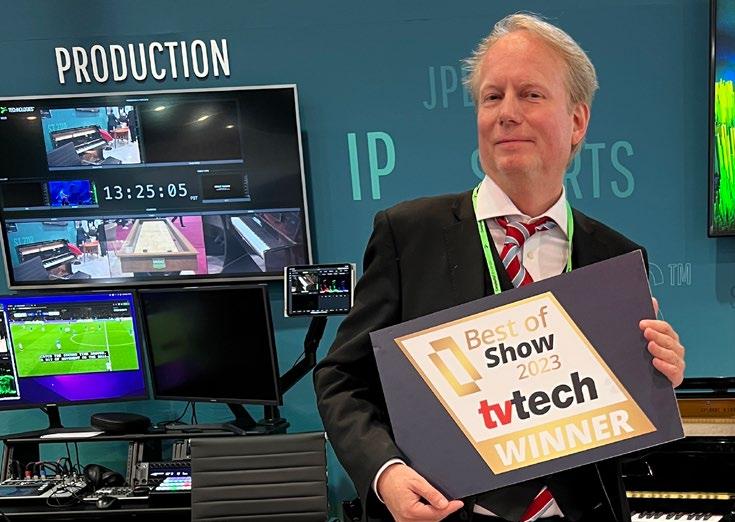
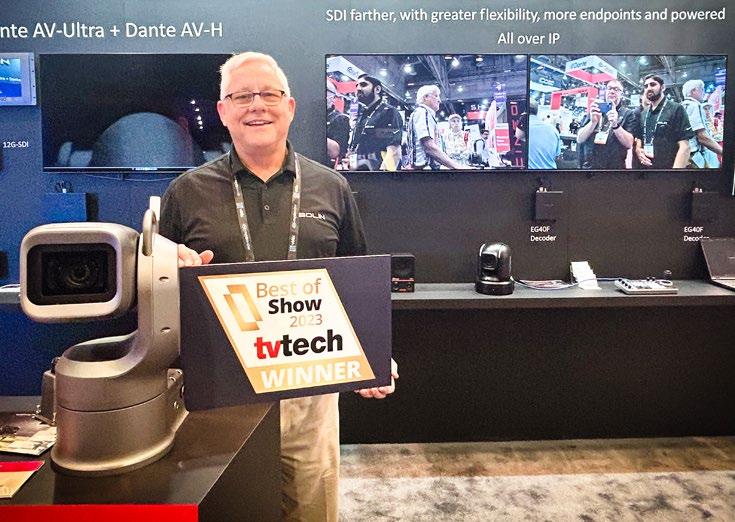
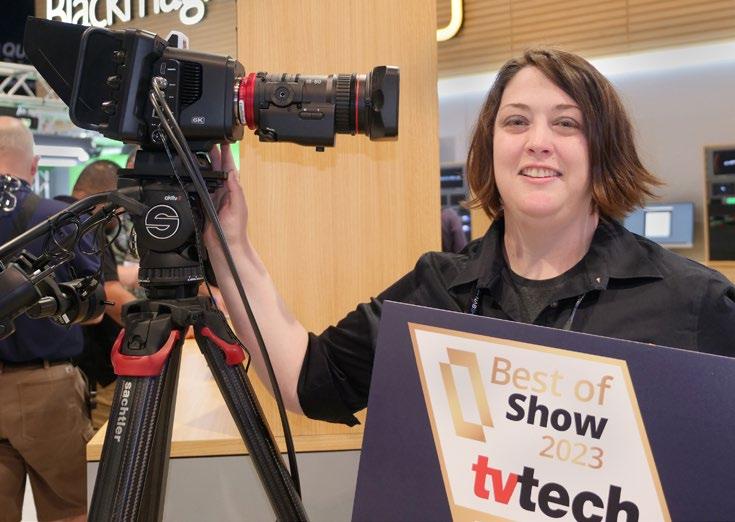

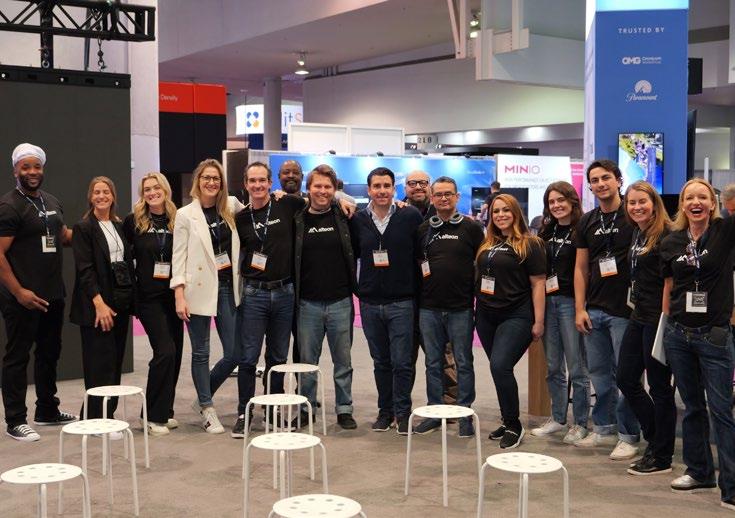
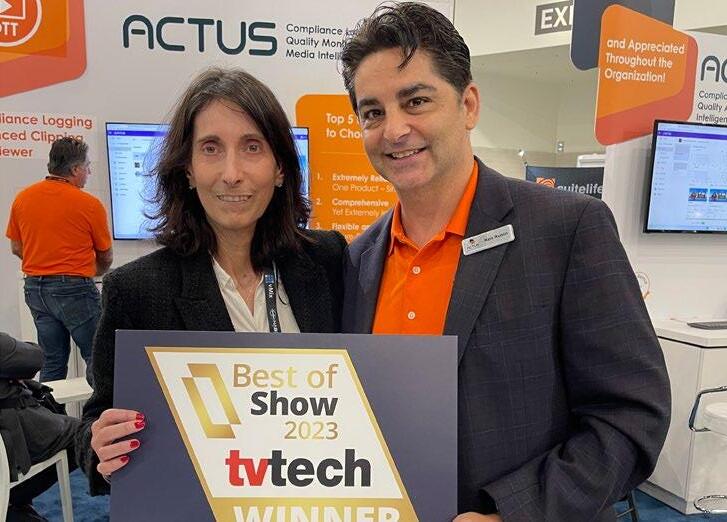
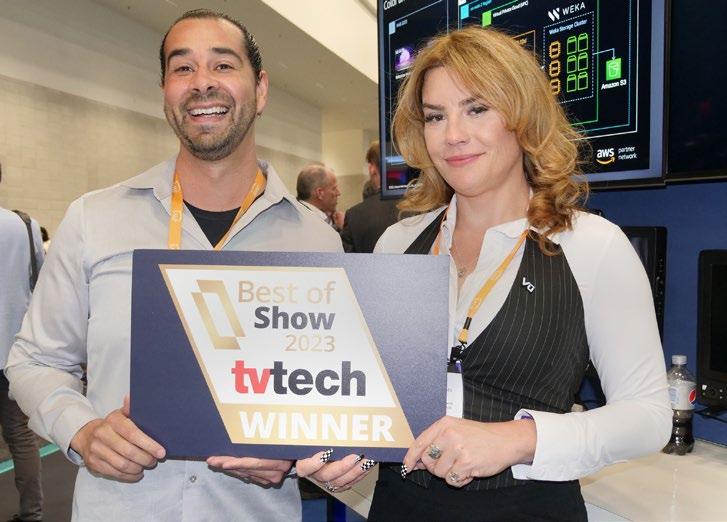


best of show
20 June 2023 | www.tvtech.com | twitter.com/tvtechnology
Apantac - Mi-16-NDI Thomas Tang
Amazon Web Services - Color in the Cloud Marlon Campos (L) and Katrina King
Actus Digital - Actus OTT StreamWatch Sima Levy (L) and Ken Rubin
Alteon.io - Alteon.io
The crew from Alteon.io celebrates its Best of Show award.
Blackmagic Design Blackmagic Studio Camera 6K Pro Sarah Jones
Blackmagic Design ATEM Television Studio HD8 Sarah Jones
Bolin Technology - EX–Ultra Tim Godby
Bridge Technologies - VB330 with new SCTE 104/35 and visual recording functionality Simon K. Frostad
BB&S Lighting - Reflect 4-Bank System Lars Nissen (L) and Toby Sali
Audio Design Desk - Audio Design Desk 2.0 Audio Design Desk - Makr. (L to R) Flora Zaret, Jared Otto, Jonathan Ontiveros, Gabriel Cowan and Tyler Pugh
BirdDog - BirdDog X120 Dan Miall
Bitcentral - Fusion Hybrid Storage Sam Peterson
Blackbird plc - Blackbird Daniel Webster




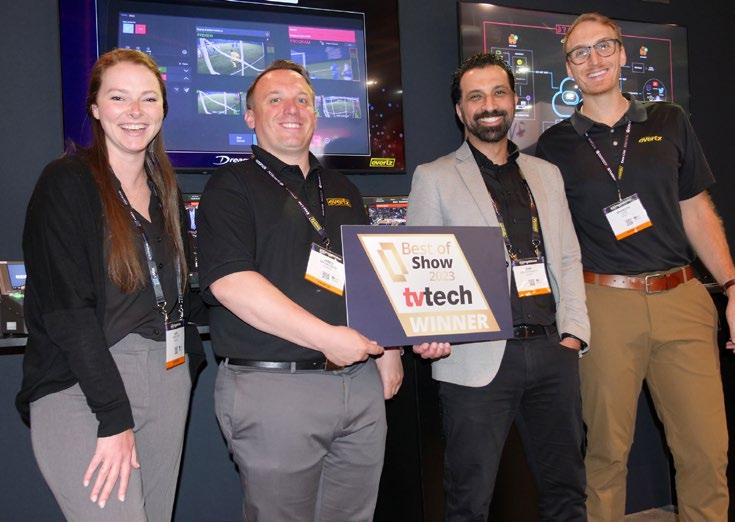
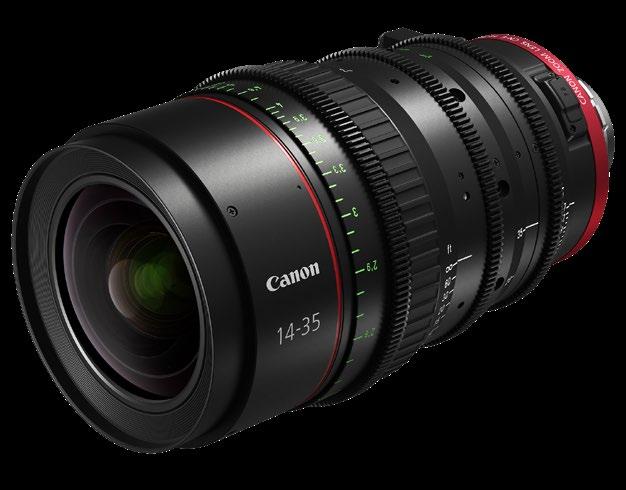

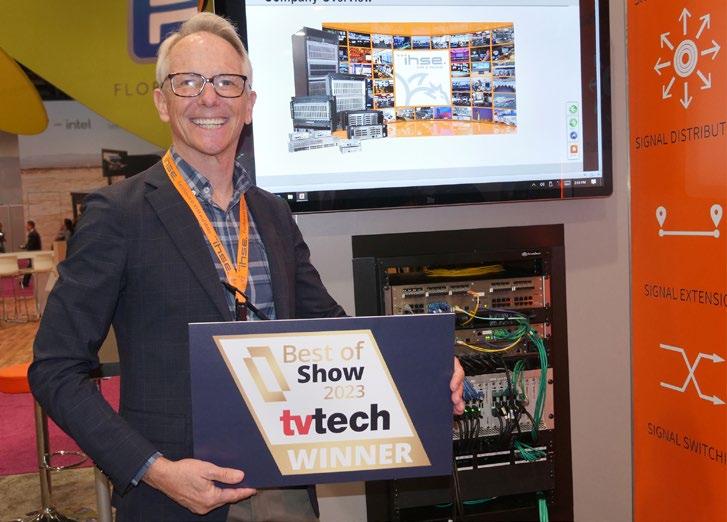


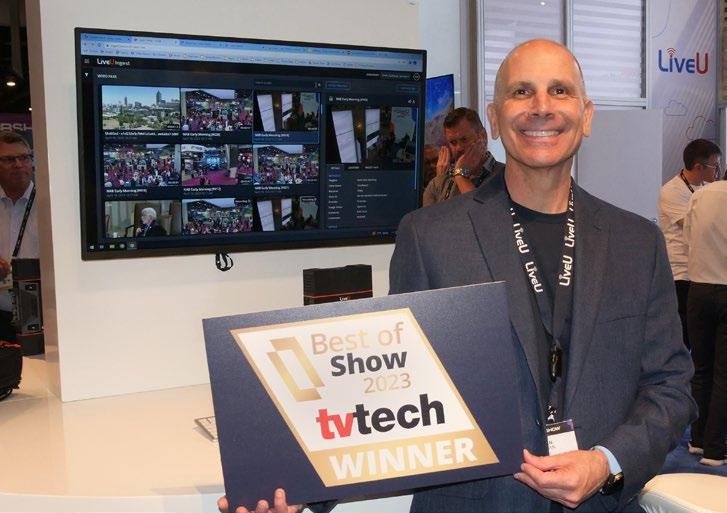
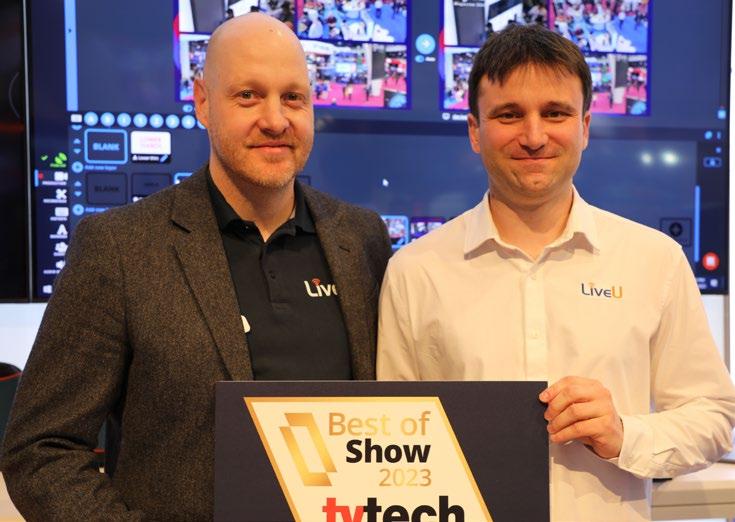


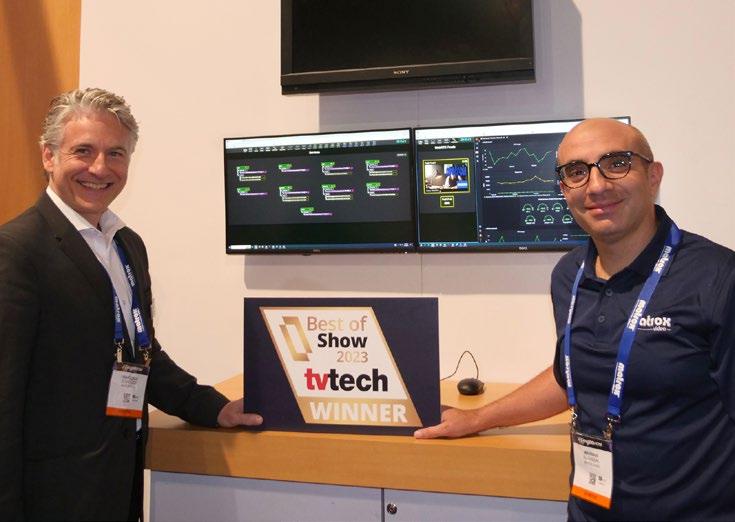
21 twitter.com/tvtechnology | www.tvtech.com | June 2023 best of show
Broadpeak - Advanced CDN (L to R) Alain-Pierre Brunel, Cyrille Schwab and Damien Sterkers
Clear-Com - Arcadia with HelixNet Integration
(L to R) Bob Boster, Rachel Archibald and Simon Browne
Digital NirvanaMediaServicesIQ Version 2 Russell Vijayan
Edgio - Uplynk Bob Lyons
Evertz - DreamCatcher - BRAVO Studio Virtualized Production Suite (L to R) Kaye Proctor, James Magnuson, Nima Malekmanesh and Brandon Law
Canon - CN-E14-35mm T1.7 L S/SP wide-angle zoom lens and the CN-E31.5-95mm T1.7 L S/SP telephoto zoom lens
Harmonic - VOS360 Ad (L to R) Gil Rudge, Jean Macher, Rob Gambino and Eric Gallier
IHSE USADraco G-Flex KVM Matrix Chris Wallace
Interra Systems - ORION Content Monitoring Suite Anantharaman Anupama (L) and Sandhu Ramandeep Singh
JVC Professional Video - GY-HC500UN, NDI-enabled Handheld Broadcast Camera (L to R) Dan Skirpan, Ian Graham, Greg Cameron, Joe D’Amico, Chris Dalaly, Edgar Shane, Alicia Reed and Sergio de Freitas
LiveU - LiveU Ingest Ronen Artman
LiveU - LiveU Studio Matt Zajicek (L) and Michael Daudignon
LTN - LTN Wave Chris Myer (L) and Rick Young
LucidLink - FileSpaces (L to R) Joel Davis, Krista Watson, Angie Cardenas, Mike Harp, Sophie Shaver, Alex Ferris, Julie O’Grady and Leda Pirinova
Matrox Video - Matrox ORIGIN Francesco Scartozzi (L) and Marwan Al-Habbal

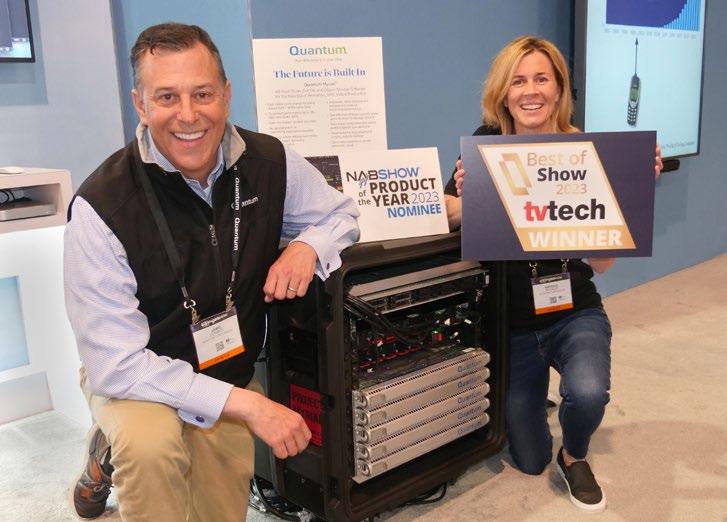


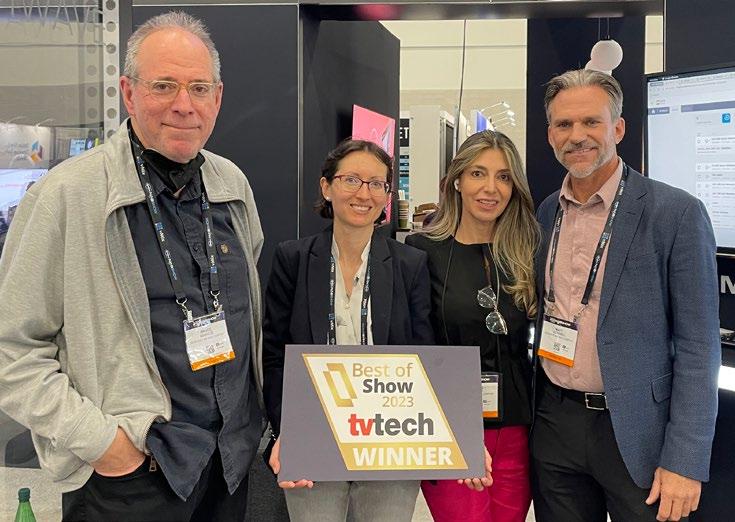
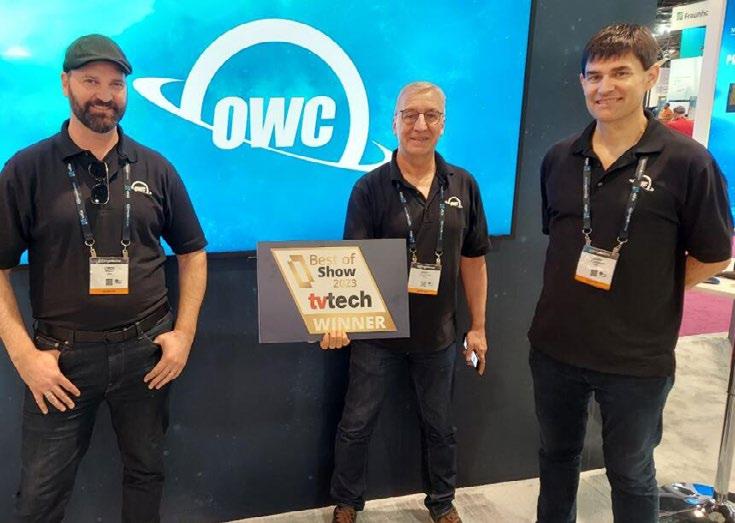
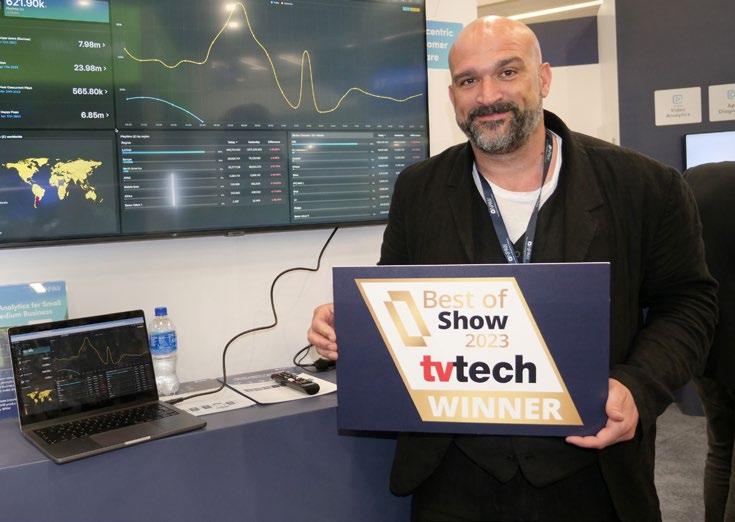
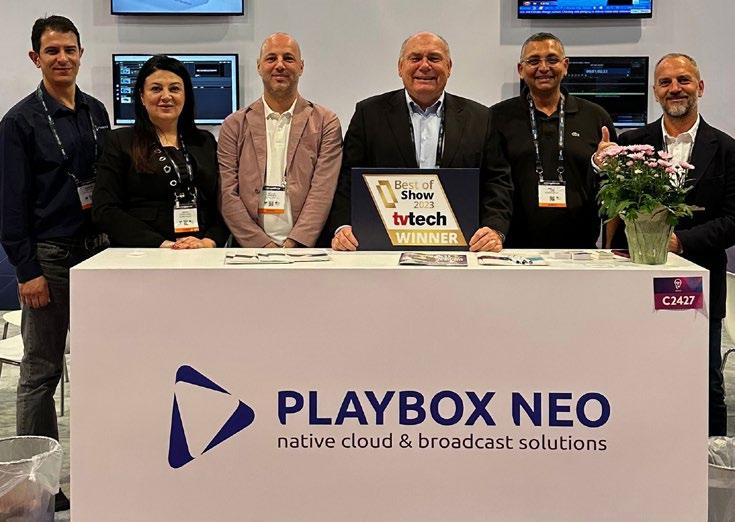
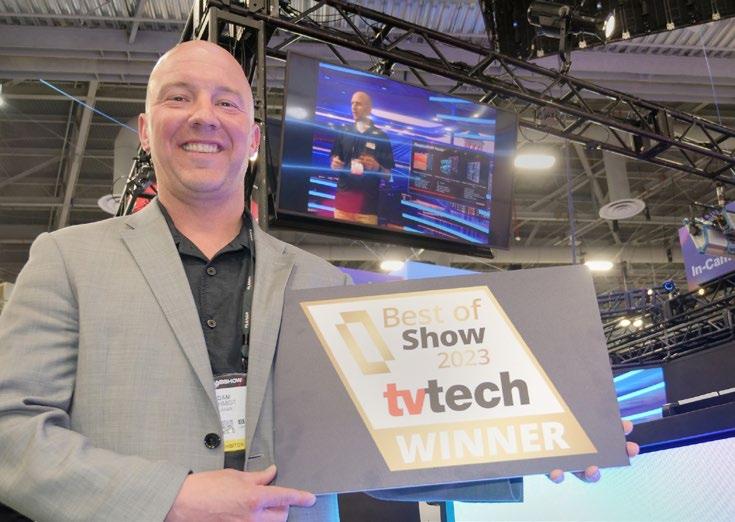

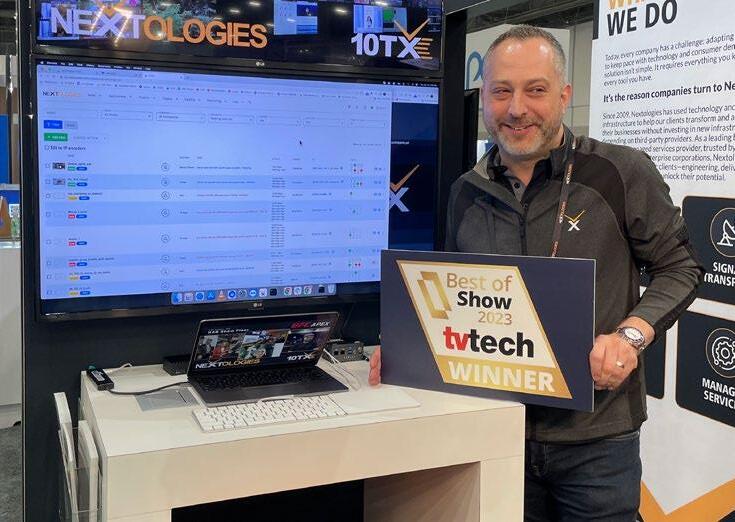
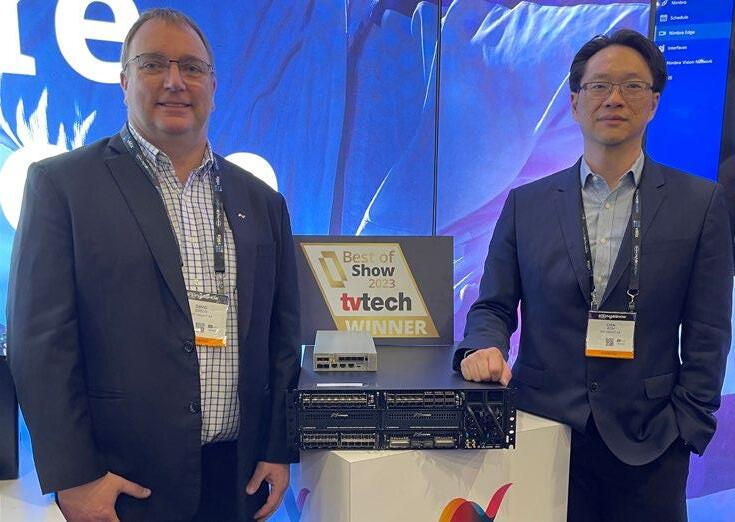
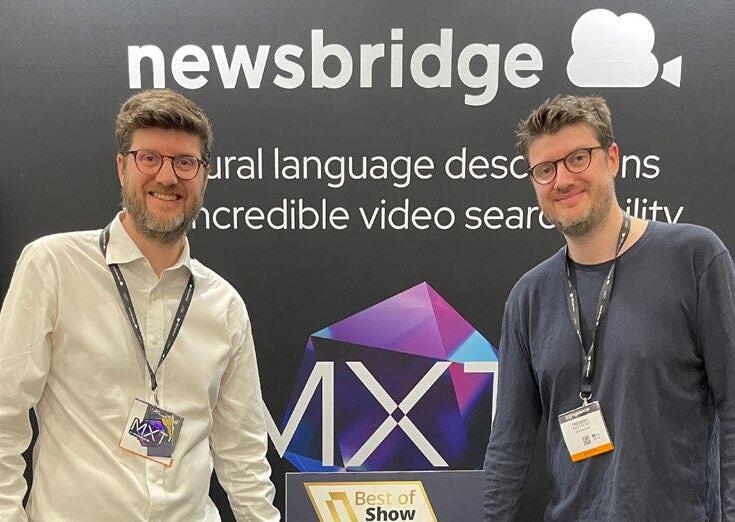
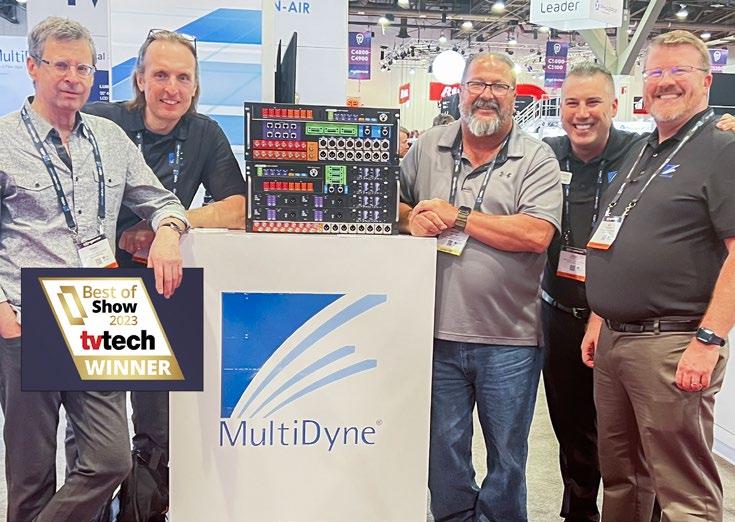

22 June 2023 | www.tvtech.com | twitter.com/tvtechnology
Quantum - Quantum Myriad Natasha Beckley (L) and Jamie Lerner
Ross Video - Carbonite Ultra 60 Nigel Spratling
Sony - VENICE Extension System 2 (L to R) Simon Marsh, Sam Fares and Nobu Takahashi Sony’s Cinema Line and Virtual Production
Spherex - Spherexgreenlight Davinder Luthra (L) and Pranav Joshi
SSIMWAVE, An IMAX Company - VOD Monitor (L to R) Bruce Markoe, Maria Alexandrova, Beatriz Pineda and Matt Herren
NPAW - Video Analytics Ruben Senor Megias
OWC - Jellyfish XT (L to R) Larry O’Connor, Ronny Courtens and Loren Mally
Panasonic Connect - KAIROS Members from Panasonic Connect’s Kairos team include Ryan Carson, Carter Hoskins and Michael Bergeron, Sr.
Planar - Planar Venue Pro VX Series Adam Schmidt
PlayBox Neo - Media Gateway for live media delivery and distribution (L to R) Nikolay Spasov, Sonya Chakarova, Iulian Ionescu, Van Duke, Sadek Labib and Pavlin Rahnev
Net Insight - Trust Boundary Appliance David Drew (L) and Chin Koh
Newsbridge - Newsbridge MXT-1 AI generative indexing technology Philippe Petitpont (L) and Frederic Petitpont
Nextologies - Control Panel (CP) Slava Levin
best of show
MultiDyne - HoneyBadger (L to R): Daniel Lord, Sebastian Mucha, Michael Martin Jesse Foster and Matt Watkins
swXtch.iocloudSwXtch Video Overlay Network
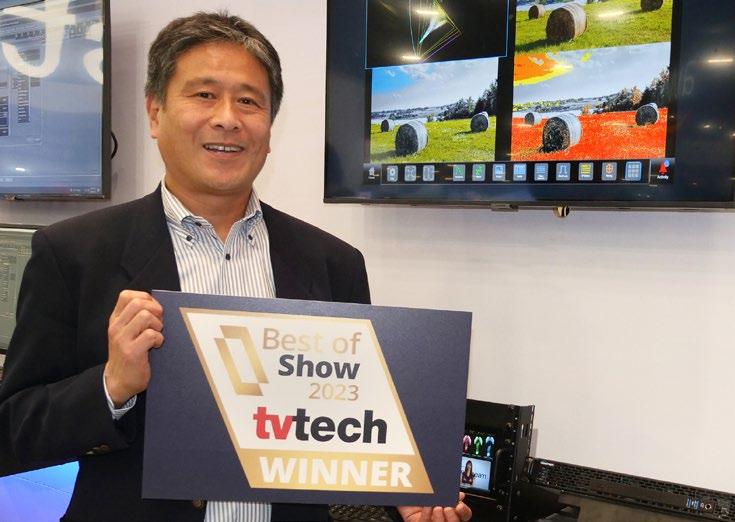

Geeter Kyrazis
TAG
VoiceInteraction
Telemetrics - OmniGlide Robotic Roving Platform
VoiceInteraction - MMS

(L
R) Ed Lopresti, Paul Anouna, Anthony Cuomo, Michael Cuomo, Eric White, Jeffery Russo, Carlos Cordero and Colin Clarke
(L to R) Renato Cassaca, Hailton Lopes, Mariana Manteiga, Miguel Malha, João Nuno Neto and João Neto

Yuvod
Telestream

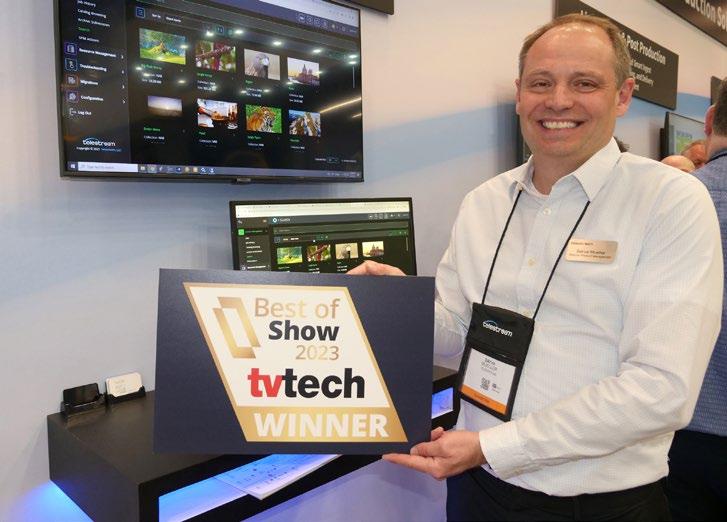


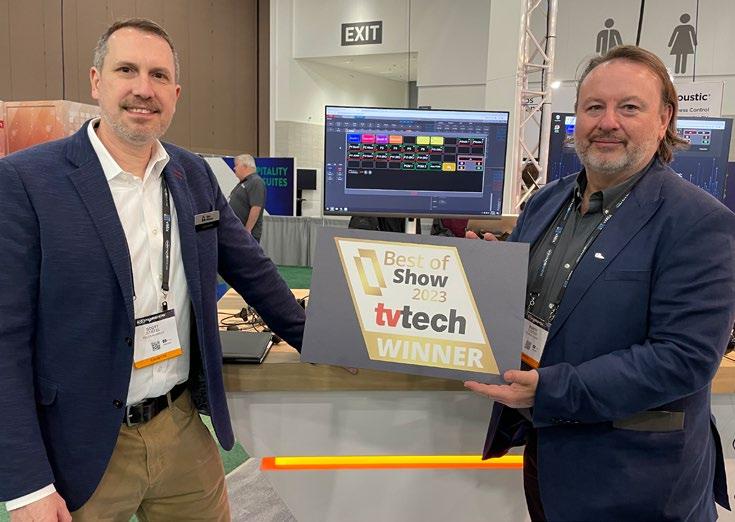
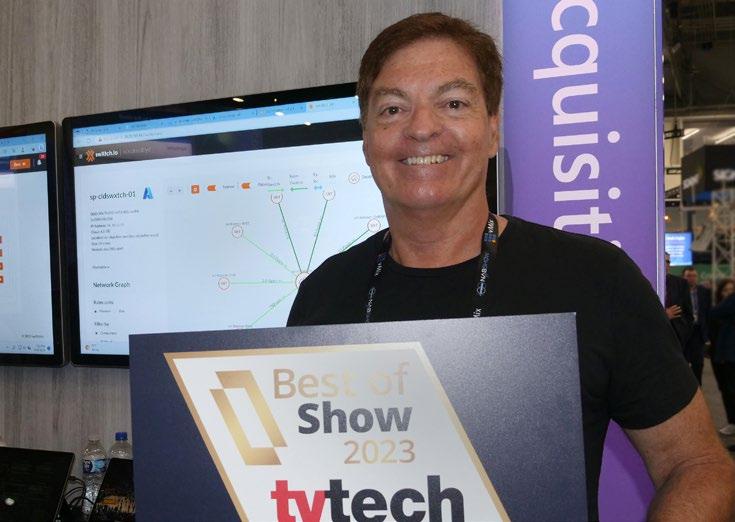


Telestream - Content Manager

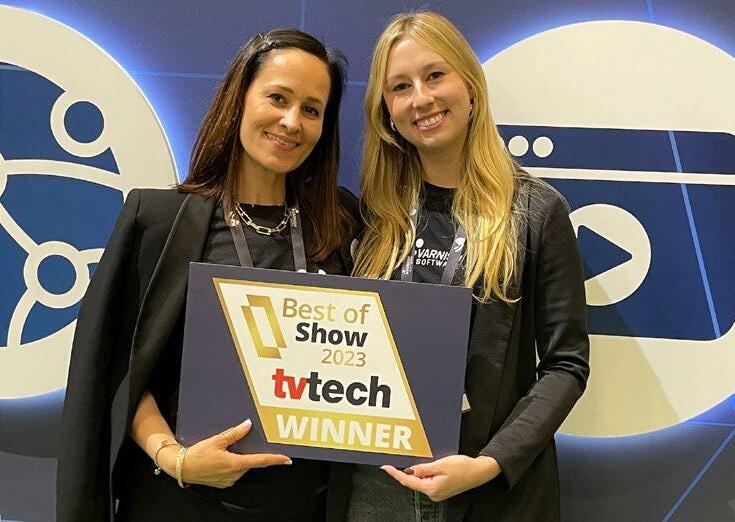
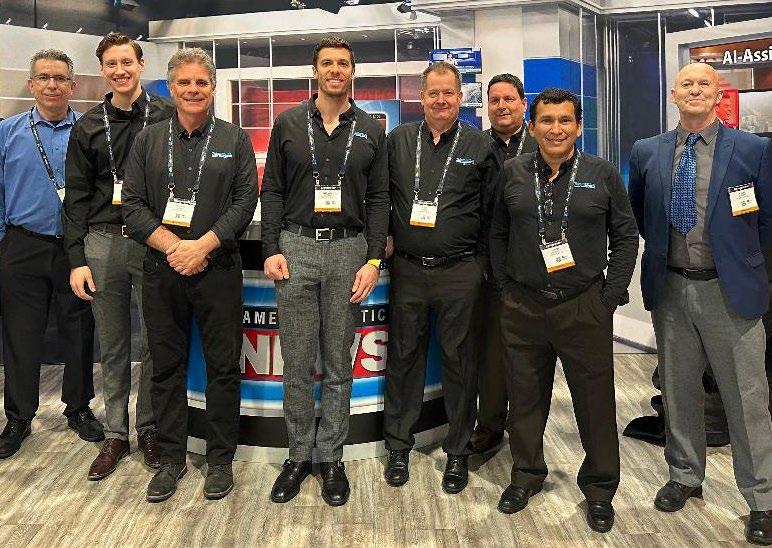
23 twitter.com/tvtechnology | www.tvtech.com | June 2023
Video Systems - Content Matching Technology Tomer Schechter
Telos Alliance - WorkflowCreator Scott Steifel (L) and Larry Deeds
Telos Alliance - Telos Infinity Virtual Intercom Platform (VIP) App Scott Steifel (L) and Martin Dyster
- Audimus.Media (L to R) João Neto, João Nuno Neto, Mariana Manteiga and Renato Cassaca
Zixi - Zixi-as-a-Service (ZaaS) John WastCoat
Vela Research LP - AdStrategy Kevin Grubbs
- Yuvod’s Platform-as-a-Service Streaming Solution Ricardo Tarraga (L) and Monica Logani
to
- PRISM MPP Tsuyoshi Kitagawa
Savva Mueller
Triveni Digital - ATSC 3.0 Translator Ralph Bachofen (L) and TV Tech Content Director Tom Butts
TVU Networks - TVU RPS One Eric Chang
best of show
Varnish Software - Varnish Enterprise 6 Justyna Poniewaz (L) and Jenny Lake
AI-Generated Audio: The Government, Media and Doomsayers
While AI/ML is not new in media production, new developments bring it to the forefront
This year we have heard the terms "artificial intelligence," "machine learning" and "deep fakes" tossed around frequently, particularly since Wall Street forecasters have discovered AI as a financial evaluation metric for a tech company’s future performance. Companies that are known to support broadcasting and media applications such as Microsoft (ChatGPT), Adobe, IBM (Watson), NVIDIA and Soundhound AI, all promote possibilities with the continued development of this technology.
After some research, I am still trying to
understand what seems to be an evolving definition of AI, but I have no doubt that smart/ fast computers will significantly impact broadcasters and media companies.

AI seems to encompass a bundle of operations like machine learning and computer-created deep fakes, dependent upon analyzing vast amounts of data to predict, create and deliver a desirable outcome. Content companies such as Netflix have benefitted from AI with computer-generated programing recommendations based on accumulated information of a person’s search
and viewing habits.
MUSIC, HOLLYWOOD SCRIPTS
Computer jocks have used AI to develop complex algorithms to create art, music, even dialog for movie and TV scripts, (music, for instance, is pretty repetitive—you can only imagine how many hit songs are based on three chords/notes and a rhyming dictionary). I also think that there is no reason not to believe that ChatGPT could write a Hollywood script. Remember, the last Hollywood writers strike gave us “unscripted” reality TV—often a waste of electronic transmission time and electricity.
Since machine learning is data-driven, it is dependent on the accumulation of more and

24 June 2023 | www.tvtech.com | twitter.com/tvtechnology
Credit: Getty images inside audio
Dennis Baxter EXPERTISE
Could AI mimic a play-by-play sports commentator?
more data samples to improve the results. Constant sampling only improves the outcome and has been particularly effective with the AI sub-field of “deep fakes.” We think of deep fakes as replicating a person or object’s face or voice onto another, but deep fakes are as old as TV itself—background sound effects such as laugh and clap tracks, even coconuts used for horse hooves were intended to imitate reality and fool the gullible listener with the magic of radio and television.
Clearly machine learning has applications in broadcasting.
There is no question that HBS—Host Broadcast Services, the production company for World Cup Football—used fast computers to make possible accurate microphone selection and mixing possible. Lawo worked with HBS to develop a mixing system that takes data of the ball position and translates that into an algorithm that captures the best possible sound from the best microphone or combination of microphones, plus determines the level to mix and blend the microphones together. Tracking the ball is done optically and in a sport like football, the focus of the game is the ball; basically, you tell the computer to follow the ball.
Is this artificial intelligence? I would say more “deep learning.” Another sophisticated automated mixing algorithm, “Spatial Automated Live Sports Audio” or SALSA, was developed by my friends Rob Oldfield and Ben Shirley.
“In our case we are primarily using deep learning to automatically recognize sound events in broadcast microphones so we can automate and enhance the on-field mixing,” Oldfield said. “We are increasing what we are doing with AI beyond this though, and are now looking at crowd and commentary sentiment analysis so we can generate metadata for other parts of the broadcast chain, for example, automatic highlight generation.
“It occurs to me that there is a lot of data from the microphones at an event (not just sound capture),” he added. “I think this has been overlooked in the past, but with the increased power of deep learning and AI we are in a better place to fully use the microphones as ‘data gatherers’ and audio can add value to all parts of the broadcast and fan experience.”
AI-ASSISTED AUDIO
Now let’s follow the flow for typical sport coverage and look at the advanced possibilities of AI—machine learning for sports coverage. Camera robotics has been around for a while and there is no reason the cameras and audio cannot follow the electronic commands
of a computer that is following play action.
AI comes into play when a computer analyzes the switching patterns and compares the director’s commands to the position of the ball within the field of view of the broadcast cameras. The computer archives the director’s selection and patterns for future progressive learning and within a short period of time, repetitions will be detected, examined and programmed into event cycles to take over the direction of the cameras and audio.
AI-assisted audio coverage/production could include speech interpretation and synthesis such as AI-driven subtitles, but could AI mimic a play-by-play or color commentator?

Consider this: The computer can learn styles from “real life” commentators and further learn how to filter information from the cameras to match the visual action and build a reference library of players or actors. The “speech” computer can ingest all the data and artificially create the commentary track and even mimic certain styles and accents.
Speech synthesis has been around awhile and with the addition of faster computers and machine learning it becomes conceivable that you can create droid commentators that interpret/present the play-by-play action and side stories to complete the entire experience.
Sound analysis has been common practice, however artificial intelligence would be good at evaluating patterns and picking the best
choice(s) for a replay from a set of indicators. For example, a very loud, sudden burst of crowd (sharp attack) with a long sustain is probably a good indication of a goal. The vocal inflections of the crowd—sustained screaming as opposed to a sigh of dismay that dies out quickly is another valuable and identifiable metric. From these simple learning indicators, the computer within a dozen repetitions will be able to accurately predict a good highlight moment.
Clearly media production will benefit from computer augmentation and machine learning simply because of the amount of content that needs to be generated. Media entertainment cuts across a variety of viewing and listening options including small or large screens, even goggles with anything from immersive sound to earbuds and an adaptive learning algorithm such as AI can only contribute to the elevated experience.
It all impacts TV technology, particularly since we work in a deeply computerized world. Where do you fit in this brave new world? l
Dennis Baxter has contributed to hundreds of live events including sound design for nine Olympic Games. He has earned multiple Emmy awards and is the author of “A Practical Guide to Television Sound Engineering” and “Immersive Sound Production — A Practical Guide” on Focal Press. He can be reached at dbaxter@dennisbaxtersound.com or at www.dennisbaxtersound.com.
25 twitter.com/tvtechnology | www.tvtech.com | June 2023 Credit: Getty images
inside audio
Since machine learning is data-driven, it is dependent on the accumulation of more and more data samples to improve the results.
NAB Show Part 1: ATSC 3.0 Beyond TV
Doug shares ATSC 3.0 innovations from the recent Las Vegas gathering
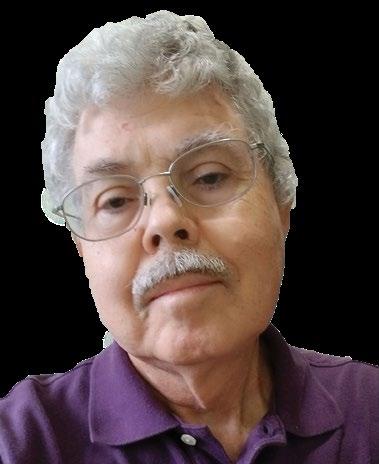
The 2023 NAB Show exhibits and sessions demonstrated the future of ATSC 3.0 can extend beyond traditional over-the-air TV broadcasting. I’ll focus on three ATSC 3.0 innovations: Use of ATSC 3.0 to provide precision time and positioning services; efficient data transmission for radio over ATSC 3.0; and sharing an ATSC 3.0 channel with a 5G signal.
BROADCAST POSITIONING SYSTEM
EXPERTISE
The topic of using ATSC 3.0 as a backup for GPS was discussed during the session “Delivering Traceable Reference Time for ATSC 3.0-based Broadcast Positioning System (BPS),” by Patrick Diamond of Diamond Consulting and co-authored with Tariq Mondal and Robert Weller from the NAB and Andrew Hansen at Volpe Center. During the session they listed some of the critical services that depend on precise timing from GPS, including mobile wireless networks, equity trading
systems and power grid synchronization as well as multiple services requiring precise position information. Loss of GPS timing, whether due to failure or intentional disruption, will have a significant impact on the systems we depend on—indeed, high-precision position, navigation and timing (PNT) has been recognized as a national security concern.
The concept of using ATSC 3.0 to provide precision time and positioning is not new. One of the questions I had about precision timing was how the differences in timing in the transmission chain were accounted for. For example, the length of the transmission line on a 2,000-foot tower will change with temperature, and timing in the path from where ATSC 3.0 time is generated to the transmitter site may also change.
The system presented uses the data from an Avateq receiver to compare the received signal timing with a precision reference— GPS if available, a local cesium or rubidium clock, or another ATSC 3.0 station with a
precision reference are possible options— and send that information to the Triveni Digital Broadcast Gateway, which adjusts ATSC 3.0 clocks to within 200-nanosecond accuracy required by critical applications. By placing the timing data on a robust physical layer pipe (PLP), reception should be possible at signal-to-noise ratios below zero dB, allowing the BPS to work indoors where GPS signals aren’t available.
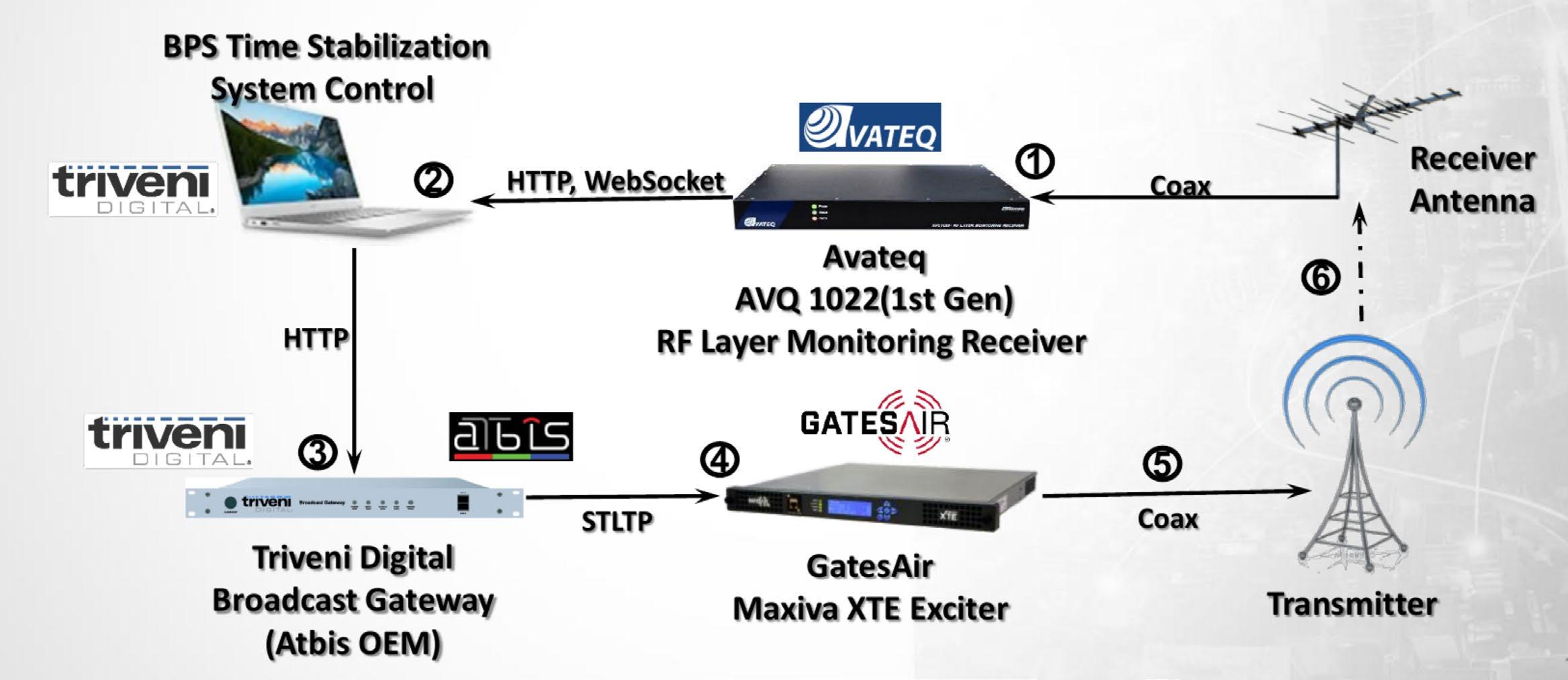
This presentation and another one with details on the system used, “BPS ATSC 3.0 Broadcast Emission Time Stabilization System Proof-of-Concept” by Mark Coril of Triveni, Vladimir Anishchenko from Avateq and Tariq Mondal, are available in the NAB BEIT Conference Proceedings.
A slide presentation, “Broadcast Positioning System (BPS) Using ATSC 3.0” presented by Tariq Mondal, Robert D. Weller and Sam Matheny from NAB, featured at a recent meeting of the National Space-Based Positioning, Navigation, and Timing Advisory Board is available online at gps.gov. Fig. 1 from the presentation shows the system configuration.
26 June 2023 | www.tvtech.com | twitter.com/tvtechnology
rf technology
Doug Lung
Fig. 1: BPS Time Stabilization System
RADIO OVER ATSC 3.0
At first, the idea of sending audio broadcasts (radio) over ATSC 3.0 sounds simple. The ATSC 3.0 standard includes options for Dolby AC-4 and MPEG-H multichannel audio.
However, as Liam Power from ONE Media pointed out in the paper “Audio Services Over ATSC 3.0: A Proof of Concept,” transmitting audio to receivers in vehicles in a bandwidth-efficient manner is not that simple. Designing an efficient ATSC 3.0 radio system requires selecting an audio codec compatible with a wide range of clients that delivers sufficient quality using the least amount of bandwidth, finding a method for transmitting the audio in the ATSC 3.0 signal with the least amount of overhead and complexity on the receiver side, and selecting physical layer parameters that provide a reliable signal in a mobile environment.
ONE Media found the xHE-AAC codec met audio requirements at bit rates as low as 24 kbps. Dolby AC-4 performed well at 48 kbps but due to encoder restrictions could not be tested at less than 48 kbps. Support for Dolby AC-4 is also limited in client devices, particularly on computers and mobile devices, compared to the HE-AAC family of codecs. For the proof-of-concept, HE-AACv2 was used as it currently has wider support than xHE-AAC.
The proof-of-concept used the “UserDefined” table in the ATSC 3.0 standard to provide signaling information for the audio transmitted as a transport stream embedded in RTP UDP data.
The demonstration used 16.66% of the total ATSC 3.0 signal capacity to provide 15 radio services at 45 kbps each (675 kbps total). A QPSK 11/16 modcod physical layer pipe (PLP) with a calculated 6.3 dB SNR requirement was used for audio. Test drives showed reception comparable (or better) than local FM radio stations.
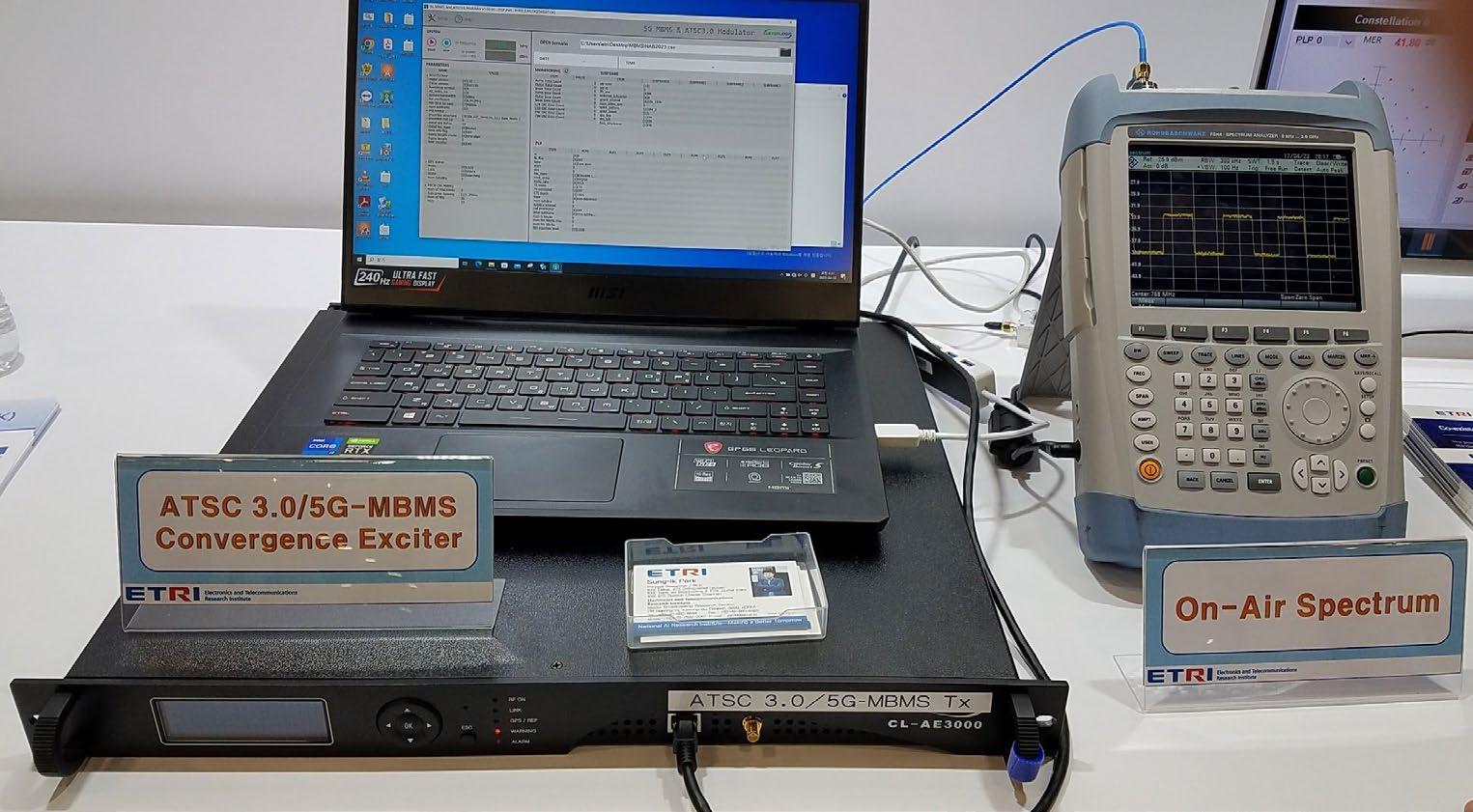
Refer to the paper in the BEIT Proceedings for more detail on how the parameters were selected and potential improvement in future designs.
ATSC 3.0 AND 5G MBMS
In my last column I expressed doubts about support for combining ATSC 3.0 and 5G in a TV channel. At this year’s NAB Show it was clear the technology for sharing a TV channel with ATSC 3.0 and a 5G-compatible signal was still in active development.
ETRI had a demonstration in the NAB Futures Park showing an ATSC 3.0 and 5G-MBMS signal sharing a single 6 MHz TV channel in a time-division-multiplex (TDM). The ATSC 3.0 and 5G signals were generated at different power levels to allow the switching to be displayed on a spectrum analyzer, (Fig. 2).
The 5G signal used 50% of the transmission time. For the demonstration, a single stream was transmitted on each signal at 5.77 Mbps for ATSC 3.0 and 5.21 Mbps for 5G-MBMS. The ATSC 3.0 signal used a non-uniform 64-QAM constellation with 8K FFT while the 5G signal used 64-QAM and 12K FFT. The code rates were similar so I would expect both signals to be close in robustness, with the ATSC 3.0 stream having a slight advantage.
Rohde and Schwarz did not have a live demonstration of 5G/ATSC 3.0 channel sharing, but did show their work using TDM to share a TV channel with 5G. Rohde and Schwarz has experience in 5G transmission systems and at the 2022 NAB Show showed a high-power UHF 5G-MBMS transmitter.
Why would broadcasters be interested in sharing their channel with a 5G-compatible signal? If broadcasters are able to convince cell phone manufacturers and the wireless companies to include ATSC 3.0 capability in their phones there would be little advantage in transmitting content twice. However, the difficulty in getting FM radio enabled on cell phones, even when a device had the circuitry to receive it, shows broadcasters are likely to struggle to get ATSC 3.0 on mobile devices. Transmitting a signal in a compatible, physical layer format would make it easier for device manufacturers.
Why
Qualcomm, a major mobile device chip supplier, has indicated it will support 5G over UHF TV channels in its new modem chips.
Transmitting a 5G physical layer signal along with a compatible ATSC 3.0 signal may be allowed under current FCC rules, and from what I saw at the show, equipment to do that will be available if customers demand it. That won’t happen unless devices become available that support 5G on UHF TV channels and wireless companies allow it on their devices. Until the transition to ATSC 3.0 is complete, ATSC 3.0 capacity is likely to remain scarce. How many stations will be willing to give up channel capacity to add a 5G signal?
These technologies show ATSC 3.0 is ready to provide services beyond delivering TV to screens. Adding Broadcast Positioning Service capability requires little extra capacity, especially if LDM is used for the robust layer, and adding more than a dozen radio services over ATSC 3.0 can be done effectively in much less bandwidth than a 1080P HD signal as ONE Media demonstrated.
Other work not mentioned here is being done to optimize data delivery over ATSC 3.0. When considering the role these “beyond TV” services could play in the future of broadcast TV, notice how cable TV has evolved from a service providing TV to consumers who could not receive TV on an antenna to a service most customers depend on for broadband internet. l
In Part 2 of my 2023 NAB Show coverage I’ll look at some of the interesting products I saw for RF transmission, reception and measurement. I welcome your comments, question, and observations on the future of broadcast TV. Email me at dlung@transmitter.com.
rf technology
27 twitter.com/tvtechnology | www.tvtech.com | June 2023
would broadcasters be interested in sharing their channel with a 5G-compatible signal?
Fig. 2: ETRI’s demonstration of ATSC 3.0 and 5G
Digital Alert Systems
v5.1 Software For DASDEC, One-Net
Digital Alert Systems has unveiled v5.1 for its DASDEC and One-Net platforms, bringing a new UI and upgraded operating system to units in the field. Marking the first time v5 software has been available for older DASDEC-II and One-Net SE units, the latest version improves the experience of users and increases security of the overall architecture, the company said.

The new version builds on the new, fresher user interface introduced in v5 and showcased in the DASDEC-III device. Offering greater visual clarity, the new release highlights the security of the company’s download server and is a steppingstone to v5.2, which will include FCC-mandated changes. Available now, v5.1 is free to all customers who are either actively enrolled in the company’s Software Assurance Plan, have purchased a new DASDEC or recently took advantage of its UP-TRADE program. z www.digitalalertsystems.com
Wohler vMON Monitors
Wohler Technologies has introduced vMON, a new line of 4K and 8K video monitors that includes SDI and HDMI inputs. Available in 17-, 27- and 32inch sizes in both 4K and 8K formats, this premium range of video monitors has been designed to address multiple applications ranging from Electronic Field Production (EFP), studio and shooting to playout, post-production, OB and events.
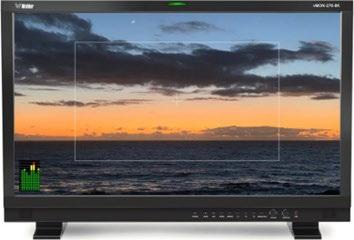
The vMON range includes support for 3840 x 2160 4K to 8192×4320 8K resolutions, HDR indication, QUAD View, various video scopes, markers and quality aids, including darkness check and focus assist. Other features include 2SI and SQD 4K/8K signal support, 16-channel embedded audio level meters, built-in speakers, rack mount (17-inch only) or Vesa mount, support for 608/708 CC closed captions and picture flip.
z www.wohler.com
Pixotope Pixotope Pocket
Pixotope has launched Pixotope Pocket, a new product that aims to make it easier for educational institutions to train students in virtual production techniques and technologies.

“The introduction of Pixotope Pocket represents the next evolution of the Pixotope Education Program,” says Pixotope Education Program manager, Carina Schoo. “While we’ve made great strides in addressing the virtual production skills gap, we knew the technology could be made even more accessible to aspiring creators. The first step was to provide students access to our platform via their media facilities through the Pixotope Education Program. With Pixotope Pocket we are taking this one step further.”
Pixotope Pocket is initially available on iOS, with support for Android devices following soon, to students enrolled in courses at establishments partnered with the Pixotope Education Program. z www.pixotope.com
RED Digital Cinema KOMODO-X

RED Digital Cinema has officially launched its KOMODO-X camera. the newest addition to RED’s KOMODO line of small formfactor 6K global shutter sensor cameras for cinema. KOMODO-X builds on the original KOMODO, multiplying frame rates and advancing dynamic range performance while expanding on the versatility of KOMODO.
KOMODO-X features improvements that allow it to be seamlessly integrated into any professional workflow while still maintaining the legacy of the small KOMODO form factor at only 4x4x5 inches and 2.62 pounds. The new I/O array features 12G SDI, full-sized DC-IN, USB Type-C, and a phantom-powered locking audio connector. In addition, an integrated 2.9-inch LCD allows for simplified control and image preview, and for even more precise monitoring, KOMODO-X also supports the direct-mounted DSMC3 7-inch Touch LCD. KOMODO-X is currently being offered in a limited-edition white ST beta version for $9,995 via RED.com or through any of RED’s premium resellers. z www.red.com
Climavision, The Weather Company Subscription X-Band Radar

Climavision and The Weather Company, an IBM Business, are working together to offer television broadcasters a subscription to X-band radar that provides stations a less costly alternative to installing and integrating their own radars.
With a direct interface into The Weather Company’s Max product suite, Climavision’s service gives broadcasters the advantages of a stationowned radar, the companies said. Climavision’s radars are located in the gaps where NEXRAD radars don’t provide coverage. The Weather Company makes Climavision’s service seamless for meteorologists and for viewers. The data from Climavision’s network can be incorporated directly into a client’s Rapid Radar Service data feed, meaning it can be displayed on-air right alongside NEXRAD data. Climavision radar data also can be integrated into other applications through an API. z www.climavision.com and www.ibm.com/weather
Agora Real-Time Transcription
Agora’s new Real-Time Transcription solution provides developers with the fast, accurate, and affordable automated transcription, and subtitling capabilities that can be easily integrated into any app or service.
Key features include: Live Transcription-transcribe real-time audio and video to include captions to improve audience reach and experience; Speaker Labeling—easily label who said what with a speaker dropdown to ensure accurate speaker information with the transcription; Searchable Transcripts—Search for words, phrases and themes across all transcripts and leverage transcript as input to ChatGPT or other generative AI solutions; Recording Captioning—play back audio or video recordings with closed captions (CC); and Channel-Based Transcription—transcribe with multiple active hosts in a channel and deliver a transcript to all participants while only paying for the channel duration, not the number of users or speakers. z www.agora.io/en

28 XXXXXXXX 2021 | www.tvtechnology.com | twitter.com/tvtechnology eye on tech | product and services
June 2023 | www.tvtech.com | twitter.com/tvtechnology 28

Telefónica Harnesses 5G and Haivision for Live Sports Video Contribution
By Juan Cambeiro Leader, 5G Customer Innovation Projects Telefónica.
MADRID, Spain—In the world of live sports broadcasting, there’s always room for improvement and innovation. In this case, SailGP’s Spain Sail Grand Prix l Andalucía - Cádiz presented by NEAR was the perfect testing ground for 5G broadcast contribution from drones.
As one of the world’s largest telcos and mobile network providers, Telefónica provides fixed and mobile telephony, broadband, and subscription television, operating in Europe and the Americas. Our dedicated customer innovation team focuses on leveraging 5G-based technologies to help customers deploy mobile live contribution solutions, much like our recent 5G-powered drone proof of concept for SailGP.
AIRBORNE MOBILE CONTRIBUTION
With sports broadcasting innovation as the core motivator for this project, the team at Telefónica saw the Sail GP event in Spain as an opportunity to test 5G and drone-based video contribution in anticipation of future customer demand. While helicopters offer excellent vantage points for sailing footage, they can disrupt the teams with extra wind and noise—a critical consideration for SailGP where the environment is difficult to control and a major factor in the sport itself.
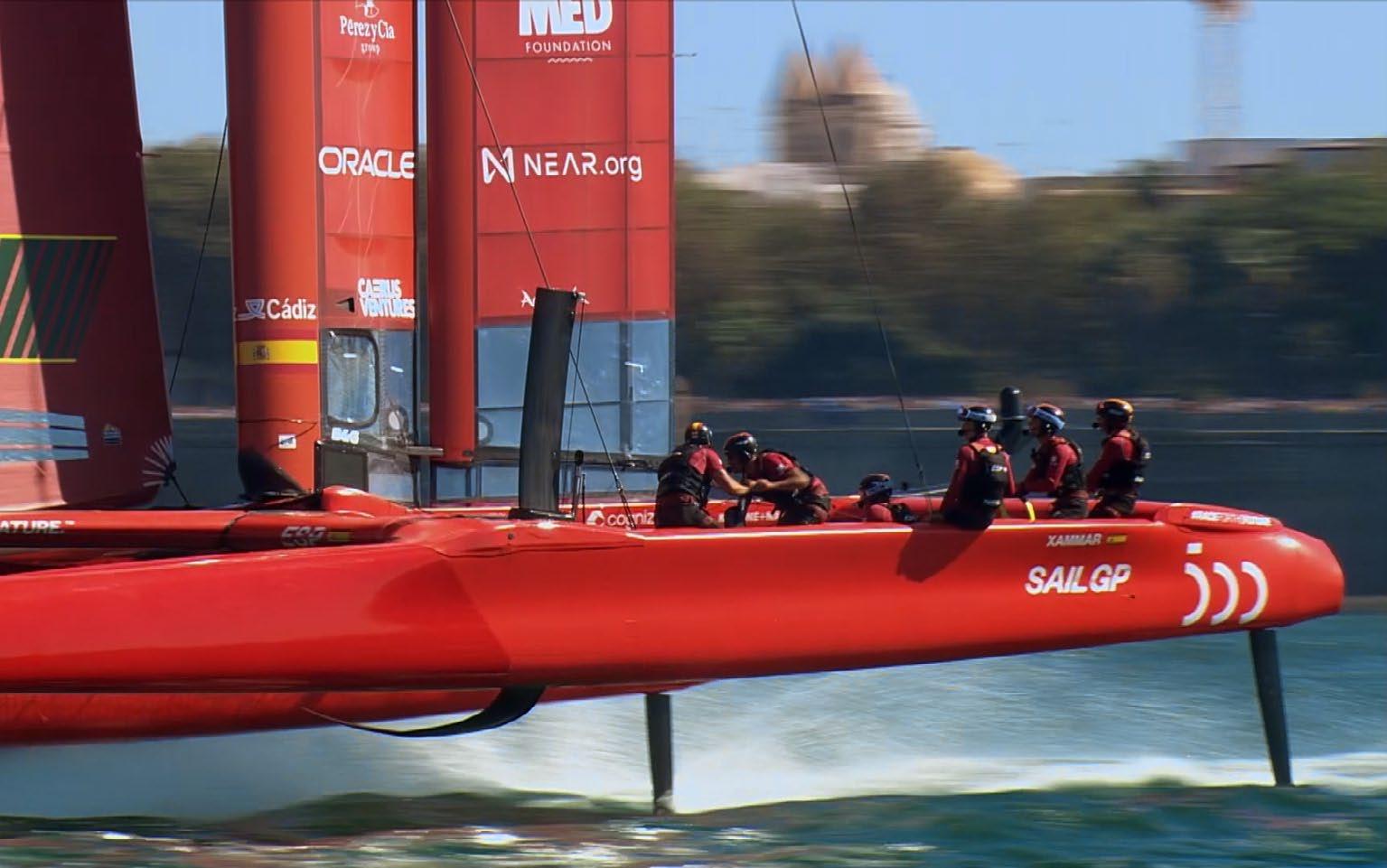
Drones were deemed a potential solution to get viewers closer to the action and, having used Haivision’s mobile broadcast solutions for other live sports applications in the past, the following production workflow unfolded.
What we needed was a technology vendor who could collaborate with us for this trial in order to build an ecosystem that would benefit everyone. In this case, Haivision was the right choice—their products are already sold in Spain, so it’s synergistic for us to work together.
In our proof of concept, three professional
drones were each equipped with a camera and 5G connectivity using Haivision’s Air320 ultra-compact wireless transmitter. As part of a collaborative relationship between Telefónica and Haivision (Aviwest), we’d been testing the Haivision Air320 for use on drones using its 5G network.
The basis of the solution was a 5G standalone (SA) network core and 5G new radio (NR) transmitters, which provided guaranteed performance levels. This required mobile transmitters, such as the Haivision Air320, that could handle low-latency video streaming over this latest generation 5G network.
We had three Air320 mobile transmitters— one per drone—employing an H.264 codec. These were transmitting constant video content with an output of 1080p/50fps at 10 Mbps. The entire workflow was supported by StreamHub, Haivision’s receiver, transcoder, and decoder platform using the Emmy Award-winning Safe Streams Transport (SST) protocol for 5G transmission.
IMMERSIVE VIEWER EXPERIENCES
Haivision’s collaboration on this pilot greatly helps us develop the market for new
use cases for 5G technology. The Haivision video transmitters connected perfectly to the 5G SA network, which speaks to the maturity and reliability of the technology. The latency, in particular, was noteworthy for this live sports application; our crew usually only experienced one-second latency glass-to-glass while using the ultra-compact Air320 bonded cellular unit and the SST protocol.
The new workflow with Haivision’s Air320 video encoder-equipped drones and 5G SA networks give broadcasters the ability to respond quickly and capture more engaging angles. As innovation in live sports broadcasting gains momentum, we’re excited to continue to leverage Telefónica’s professional expertise and test our products with their 5G network to support live remote broadcasts. Haivision has great battle-tested products and support; we will be sure to leverage this expertise in future projects. l
Juan Cambeiro is a leader at Telefónica’s 5G Customer Innovation Projects. He can be reached at juan.cambeirocuns@telefonica.com
More information is available at www.haivision.com.
Juan Cambeiro’s team field-tested 5G drone video contribution using Haivision Air mobile transmitters.
USER REPORT
equipment guide | transmitters & rf equipment June 2023 | www.tvtech.com | twitter.com/tvtechnology 30
Dejero Connects Australia’s Channel 9 for Dubai World Cup Coverage
By Jimmy Poon Founder Boqin Group
DUBAI, UAE—The Boqin Group is no stranger to working under pressure. Founded as a boutique sports management consultancy in 2008, we’ve tried to embody the same innovative, forward-thinking philosophy that Dubai is known for across the world. Our approach has always been future-focused, and we’ve always tried to mitigate risk to create better products.
Part of that approach is adopting innovative technology, so when we were asked to facilitate a live broadcast production from atop of Dubai’s The View, Palm Jumeirah observation deck with Australia’s Channel 9, we knew we could source the right tech.
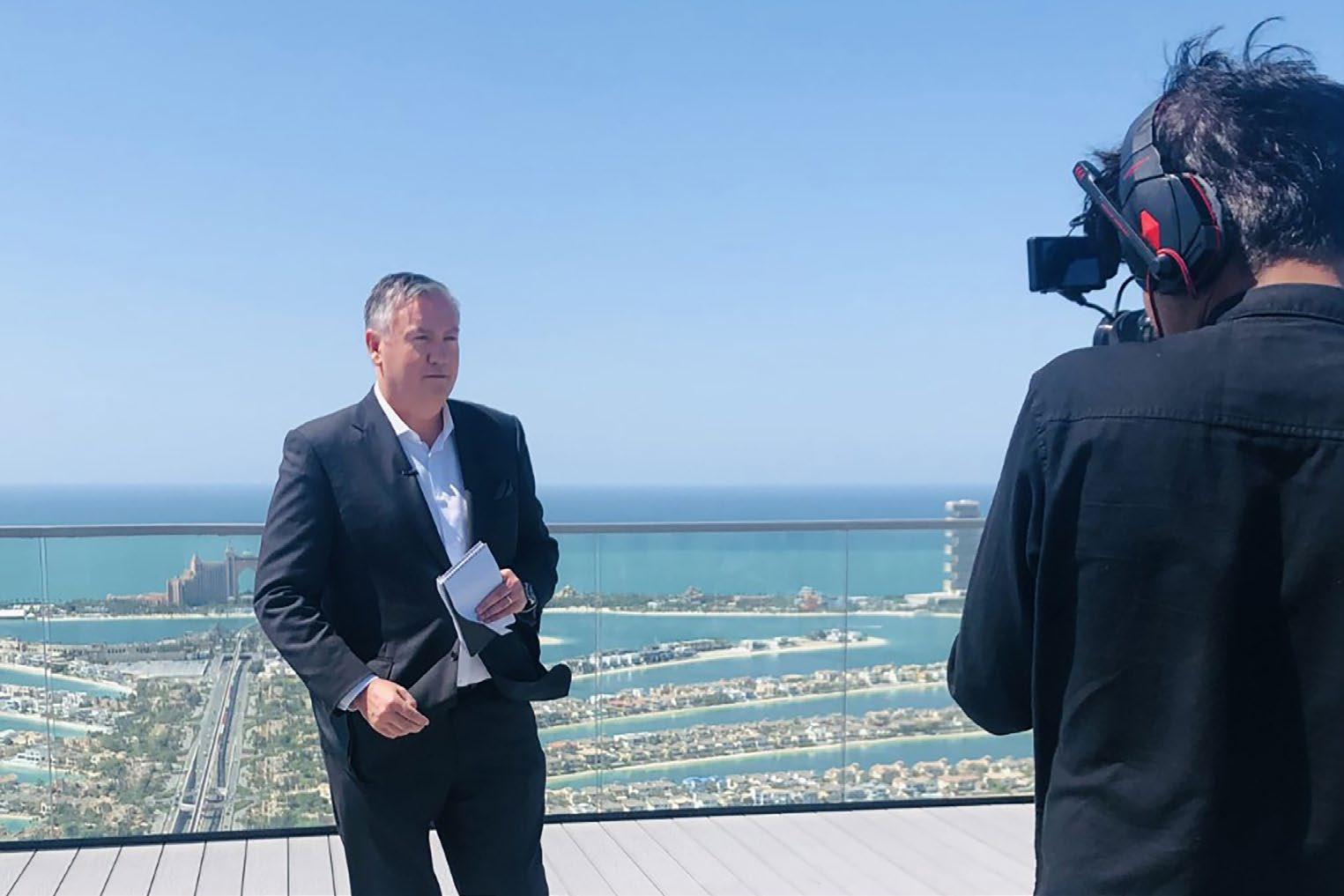
Even if we only had a few days to do it.
TOP OF THE VIEW
The mission was clear: Timed to broadcast during the week leading up to the Dubai World Cup thoroughbred horse race, Channel 9 wanted a live TV linkup from the top of The View, situated at the iconic Palm Jumeirah island in Dubai for its primetime sports show. With a TV audience in the millions, the workflow had to incorporate a two-way live interview between Channel 9 in Australia and Australian broadcasting legend Eddie McGuire in Dubai, and it had to happen in eight days.
Channel 9 was keen for us to use Dejero for connectivity, which we had never used before. We contacted Dejero who understood our requirements straight away. Through their local partners, Dejero was able to quickly deliver an EnGo mobile transmitter in Dubai, as well as set up connectivity to an existing Dejero WayPoint receiver at Channel 9 in Australia.
The Dejero kit checked many boxes for us: the location was challenging, the timing was tight, and we needed to guarantee bandwidth to get the job done successfully. The big question was, how do we get this done quickly without any drops across our audio and video feeds?
ISLAND CONNECTIVITY
The equipment arrived two days before the live broadcast. Palm Jumeirah is effectively a man-made island that reaches a kilometer into the sea and The View is 54 stories up, so the production’s location was already challenging. Our biggest concern was bandwidth, and while the EnGo video transmitter can combine IP networks with cellular and satellite connectivity for maximum versatility, the Dubai Palm’s tech team was able to guarantee bandwidth on its internal system over fiber. We simply plugged a 100-foot cable into the EnGo and we were done.
Our second challenge was the weather. Concerned about audio quality, given the arrival of seasonal winds—called “Shamals”— we set up in a more sheltered location on the 52nd floor, but when Eddie McGuire arrived he insisted on the original location.
He was right, of course. It was the money shot, with a stunning vista of Dubai in the background.
Dejero made this last-minute move much easier and cut setup time considerably. We moved the entire setup in under 15 minutes, hid Eddie’s lavalier mic in his lapel to protect it from the wind, ran the return audio to his
earpiece and started running tests with five minutes to go.
When we went live, the EnGo transmitted high-quality video at incredibly low latency. It also provided two-way, duplex voice comms between the Channel 9 studio and the camera operators in Dubai for enhanced coordination, as well as interruptible foldback to Eddie’s in-ear monitors.
The live segment was flawless.
The speed of setup, supply and expertise from the Dejero team were all factors in the success of this project. As we say, Boqin is no stranger to working under pressure, but we had the best support to test and succeed. l
Jimmy Poon, M.B.A. Sport Management, started his career in marketing and event management for major media houses in the Middle East, involved strategically in initiatives such as national newspaper launches, radio marketing campaigns, and Broadway shows, In 2008, Jimmy established his own sports management business Boqin which offers sports marketing, talent development, and live event services. He can be reached at jpoon@boqingroup.com
More information is available at www.dejero.com.
31
USER REPORT
equipment guide | transmitters & rf equipment twitter.com/tvtechnology | www.tvtech.com | June 2023
Jimmy Poon’s Boqin Group successfully set up a live link for Australia’s Channel 9 using Dejero.
WFMZ-TV Increases VHF Power Output and Coverage With GatesAir
By Dennis Nice Transmission Chief Engineer WFMZ-TV.
ALLENTOWN, Pa.—WFMZ-TV 69 is an independent VHF station serving the Lehigh Valley and Berks County of eastern Pennsylvania. At 80.6 kW ERP, WFMZ’s over-the-air signal penetrates the Philadelphia market to the south, east into New Jersey, and several counties north and west.
After the repack ended in 2020, WFMZ moved from its 800 kW UHF Channel 46 to WBPH Bethlehem’s 80 kW Channel 9, also shared by WLVT Bethlehem, which also broadcasts WPPT Philadelphia in SD on its shared space.
POST-REPACK CHALLENGE
Post-repack, various technical challenges reduced our signal penetration. The original Channel 9 antenna was a Horizontal polarized six-bay directional antenna with a transmitter TPO of 10 kW. The sharing partners agreed to solve the lost signal problem by moving to an omnidirectional, four-bay antenna system with 50% horizontal and 50% vertical polarization and doubling the power of our existing GatesAir 20 kW Maxiva VAXTE VHF transmitter to 40 kW TPO.
To my understanding, this is the highest power air-cooled VAXTE transmitter GatesAir has produced, and it has once again powered our signals into the neighborhoods we lost post-repack.
We had the choice of increasing our transmitter size or starting over with liquid-cooled. We chose the former, and our refurbished Maxiva VAXTE went live in January 2023. Along with price point and confidence in their longevity and technical support, we stayed with GatesAir because they were a common denominator for all three broadcasters in the channel-sharing agreement.
That importance is amplified by the fact
that the transmission systems are on the WFMZ property. WFMZ’s studios and tower are colocated on South Mountain in Allentown, and we have long hosted the other two stations’ transmission systems.
GatesAir and their installation partner managed the original installation and upgrade. We updated the coaxial and electrical infrastructure inside our transmitter building in 2018, and installed a constant impedance filter (CIF) to take the VAXTE signal to the antenna. Rather than replace it in the upgrade, GatesAir suggested we add a second CIF to the “new half” of the transmitter and combine the two signals at the output. With 48 power amplifiers in the VAXTE, managing the timing, combining and line lengths for the RF signal, sampling, measuring, and correction is a weighty challenge. Their service team worked through those challenges, and the result has been impressive.

THE NEW FOOTPRINT
Our new transmitter footprint spans six cabinets, with eight amplifier modules per cabinet. While that seems big, it is expected for an air-cooled transmitter at this TPO. Full-sized doors on the rear of each cabinet provide access for maintenance. Replacing an amplifier module is simple, with only some
quick disconnects required while the transmitter remains on the air.
We use redundant Maxiva XTE exciters in the transmitter. These are ATSC 3.0-upgradeable units that provide stable power and meet all performance specifications for the signal. The VAXTE’s web GUI allows us to monitor exciter performance and drill down to see the voltages, currents and temperatures for each PA module, as well as reflected power and general power output from the transmitter. Connectivity to a remote-control system provides alarming if any power thresholds are crossed.
Viewer response to the increase has been positive. A contributor to an online local broadcasting forum recently commented that WFMZ’s signal once again reaches into his neighborhood on the market’s outer edges, and a family member of our staff reports she can now receive the station at her home northwest of Philadelphia. That tells me that the transmitter and antenna system upgrade have fulfilled the purpose of improving our coverage. l
Dennis Nice has been on the WFMZ engineering team since 1980. He can be reached at dnice@wfmz.com.
More information is available at www.gatesair.com.
WFMZ overcame post-repack signal challenges with an upgraded, more powerful Gates Air transmitter.
USER REPORT
equipment guide | transmitters & rf equipment June 2023 | www.tvtech.com | twitter.com/tvtechnology 32
Dielectric Top-Mounted UHF Broadband Pylon Antennas
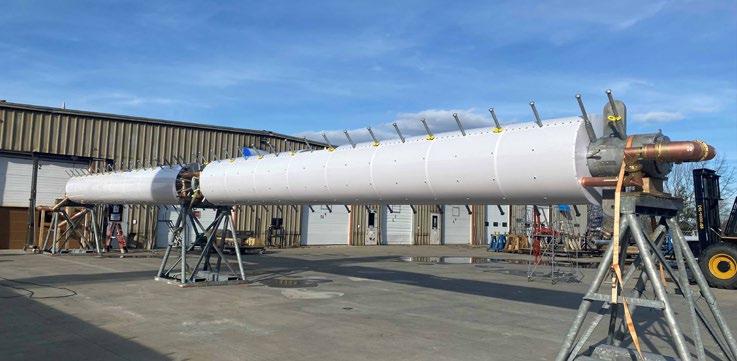
Dielectric has developed its first top-mounted, free-standing UHF broadband antenna. Now available, the new antennas build on more than 15 years of field-proven Dielectric broadband technology with new patent-pending design innovations. Broadband pylon antennas bring exceptional bandwidth, performance and pattern flexibility to broadcasters. They have traditionally been offered as side-mounted solutions due to structural hindrances that compromise the pylon from being self-supporting. Dielectric has engineered a structurally-sound, broadband pylon design for top-mounted configurations without sacrificing horizontal and vertical pattern circularity, bandwidth characteristics, and elevation pattern gain.
The breakthrough was made possible through Dielectric’s work developing topmounted, stacked antenna systems and combining that knowledge with techniques used for side-mounted broadband pylons. The new slotted coaxial design supports up to 10 UHF channels while reducing wind load and footprint on broadcast towers.
z www.dielectric.com
Vislink Cliq OFDM Mobile Transmitter
MultiDyne VF-9000
MultiDyne’s VF-9000 is a 1RU fiber-optic transport platform with SNMP monitoring. The high-density unit offers a reliable signal transport solution for intra-facility connection, such as moving TV program signals from the studio to a transmitter site. Other use cases include inter-facility connections, sports broadcasts, ENG, and any studio or mobile truck application where space is limited. Dual hotswappable power supplies ensure optimal power redundancy.
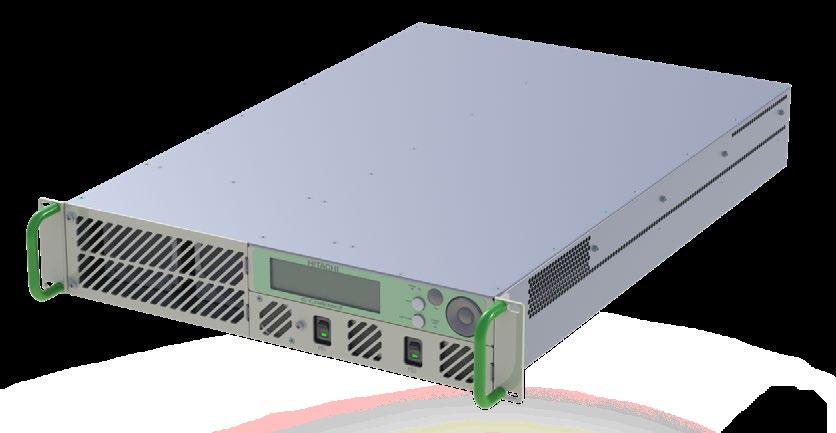
The VF-9000’s high-density design includes 18 or 36 optical I/O (9 or 18 SFP Ports) and can be configured with up to 18 full-size BNCs or 36 HD-BNCs. If populated with CWDM SFPs, all 36 signals can be multiplexed/de-multiplexed over/from two SM fibers. The system also supports 1GbE optical extensions for handling SDI and LAN signals in one frame.

z www.multidyne.com
Hitachi Kokusai Electric Comark E-Compact LP Series
The new E-Compact LP Series of LPTV transmitters are super compact and rugged platforms designed from the ground up specifically for low-power TV.

The E-Compact LP series uses System-on-Chip (SoC) technology, enabling multiple system elements and powerful measurements, making it ideal for small LPTV stations sites.
Key features include: Single chassis design with exciter, driver, and PA; EC705LP-AT1 - 50W model for ATSC 1.0, 1RU chassis; EC720LP-AT1 - 125W model for ATSC 1.0, 2RU chassis; air cooled~broadband UHF amplifier design (14-36); Adaptive Digital Pre-Distortion (A-DPD); builtin web GUI for local and remote access; built-in SNMP client for remote management; user monitoring/control via front panel MMI and; optional off-air receiver for use as a translator.
z www.comarktv.com
Rohde & Schwarz R&S THU9evo Liquid-Cooled UHF Transmitter Family
The Cliq is one of the smallest 4K mobile transmitters available. Capable of full 4K or transmission of two HD video signals, the Cliq OFDM Mobile Transmitter provides broadcasters with an uncontended wireless video network connection to obtain unique and immersive camera views with freedom to roam. Cliq is ideal for live event broadcast applications including PoV and body-worn cameras, drones and onboard vehicles.
With support for HEVC, Cliq provides operators with the flexibility to deliver more camera views in their allocated bandwidth or wirelessly capture content over twice the distance compared to older MPEG-4 devices.
z www.vislink.com
The R&STHU9evo/R&STHV9evo high-power transmitter line is designed to provide the next step toward minimizing operating costs for terrestrial broadcasting. Its overall energy efficiency values of up to 43% for UHF and 50% for VHF represent all-time highs. The transmitter family is based on the well-established R&STHx9 platform and carries forward all of its proven strengths. Network operators benefit from low operating costs throughout the product’s lifecycle.
The liquid-cooled high-power transmitters deliver output power levels from 1.5 kW to 106 kW in the UHF band and from 1.3 kW to 30 kW in the VHF band. With the R&STHx9evo transmitters, Rohde & Schwarz offers the highest power density on the market at up to 17.4 kW per rack for COFDM standards and up to 19 kW for ATSC.
z www.rohde-schwarz.com

buyers briefs
33 equipment guide | transmitters & rf equipment twitter.com/tvtechnology | www.tvtech.com | June 2023
equipment guide | transmitters & rf equipment

buyers briefs
Electronic Research Inc. UHF Television Bandpass Filters Rated for 1500 and 5000 Watts
ERI’s new UHF Television Bandpass Filter features improved insertion loss and a unique forced air cooling system. Convection cooled and rated for 1.5 kW average power at the filter output, the Model UF5000B adds forced air cooling, increasing power handling capability to 5.0 kW.
The unique targeted forced air-cooling system utilizes distributed finned heat sinks with individual cooling fans to target locations that generate the most heat, based on laboratory testing. The filters are constructed of lightweight aluminum with copper resonators. The filter is temperature compensated using an Invar stabilized copper bellows, part of the resonator assembly. Six and eight-pole models are available. Input and output connections are unflanged: 1-5/8, 3-1/8, or 4-1/16-inch.
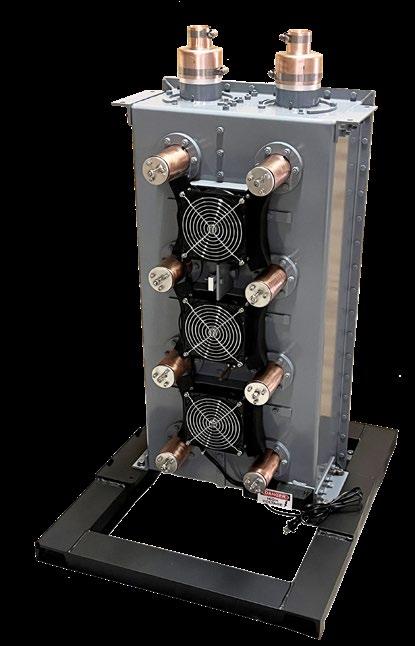
z www.eriinc.com
LiveU On-site Production Solution
LiveU’s new on-site solution offers unmatched efficiency at a very cost-effective price point. The on-site solution enables bonded wireless transmission from the field straight into the production truck in a single click, with no need for a fixed internet connection.

Leveraging the experience gained from pioneering the use of IP video over bonded-cellular, the solution includes LiveU’s multicam/ compact 5G 4K field units, and mobile receiver in the OB truck. Live video is transmitted directly from the units to the OB truck in a highly resilient manner without the need for cables, fixed internet or complex networking configurations.
z www.liveu.tv
TVU Networks TVU RPS
Introduced at the 2023 NAB Show, TVU RPS One is the latest member of the TVU Remote Production System (RPS) family of multichannel REMI solutions. Designed as an all-in-one hybrid cloud and studio remote production solution, the RPS One combines RPS’s award-winning, field-tested synchronized multicamera encoding and transmission functionality in an ultra-compact and rugged form factor with six integrated 5G modems for wireless transmission.
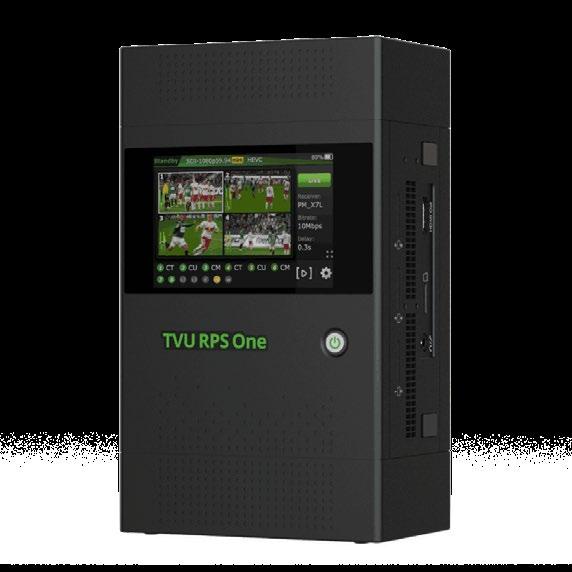
It is the only product in its class that supports six, next-generation embedded 5G sub-6 GHz modems and boasts an innovative 5G MIMO antenna array that guarantees the seamless operation of all built-in 5G modems at peak performance simultaneously. This remarkable feature is complemented by six nextgeneration 3GPP Release 16 modems, which provide comprehensive support for 5G SA and NSA modes, as well as compatibility with the most widely-used 5G, LTE, and 3G bands across the globe.
z www.tvunetworks. com/products/ tvu-rps-one/TVU Networks

products & services marketplace
June 2023 | www.tvtech.com | twitter.com/tvtechnology 34
9000
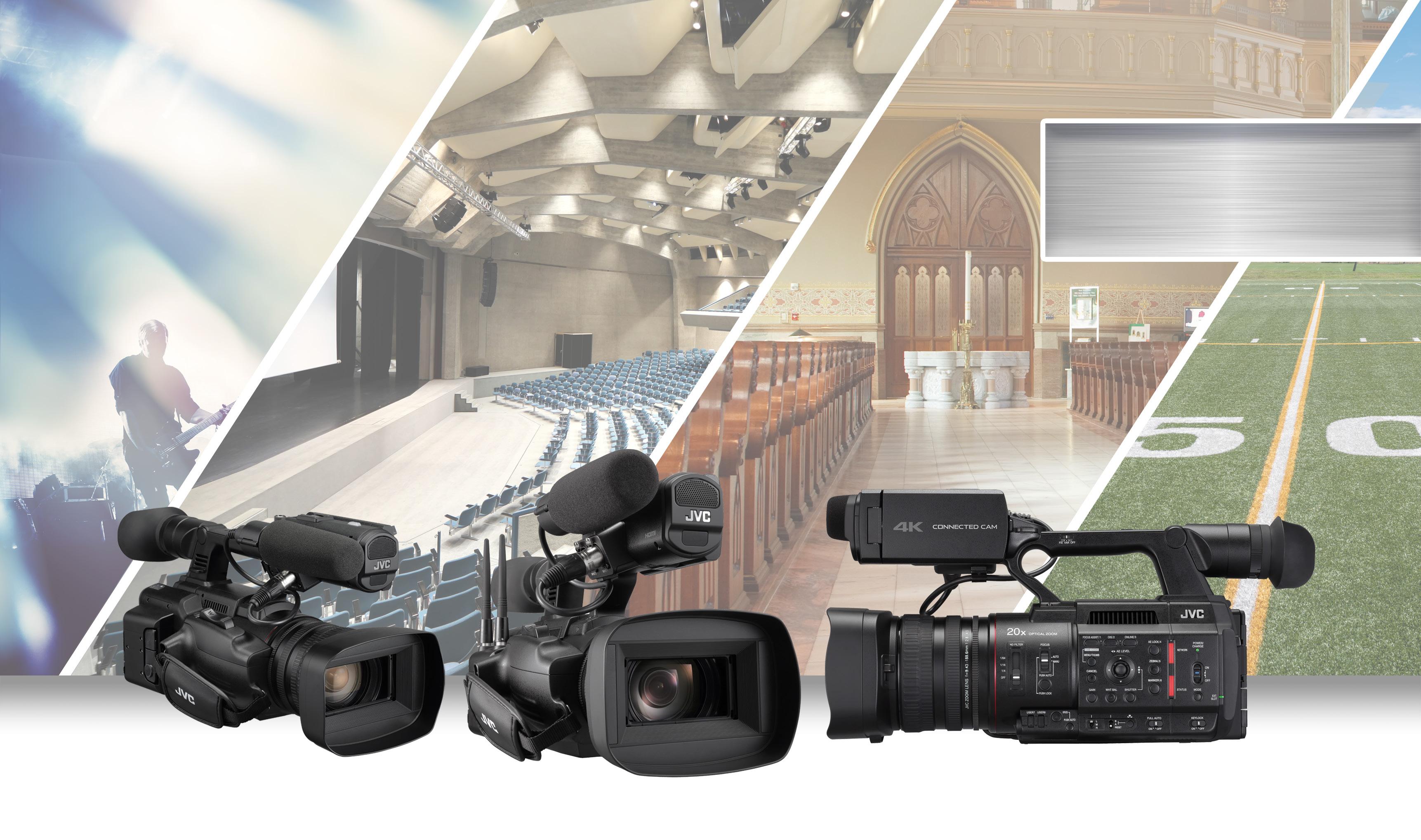

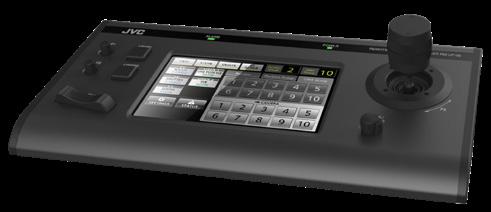




aveco.com We love to play! PRODUCTION | PLAYOUT | MAM New Generation Studio & Playout Automation New Generation Media Asset Management On-Prem | Cloud | Hybrid








































 Dr. Sung-Ik Park, the Republic of Korea’s Project Leader of ATSC 3.0 Physical Layer, for the Electronics and Telecommunications Research Institute (ETRI), a government-funded research organization.
Dr. Sung-Ik Park, the Republic of Korea’s Project Leader of ATSC 3.0 Physical Layer, for the Electronics and Telecommunications Research Institute (ETRI), a government-funded research organization.























































































 Dave Norman
Dave Norman













































































































